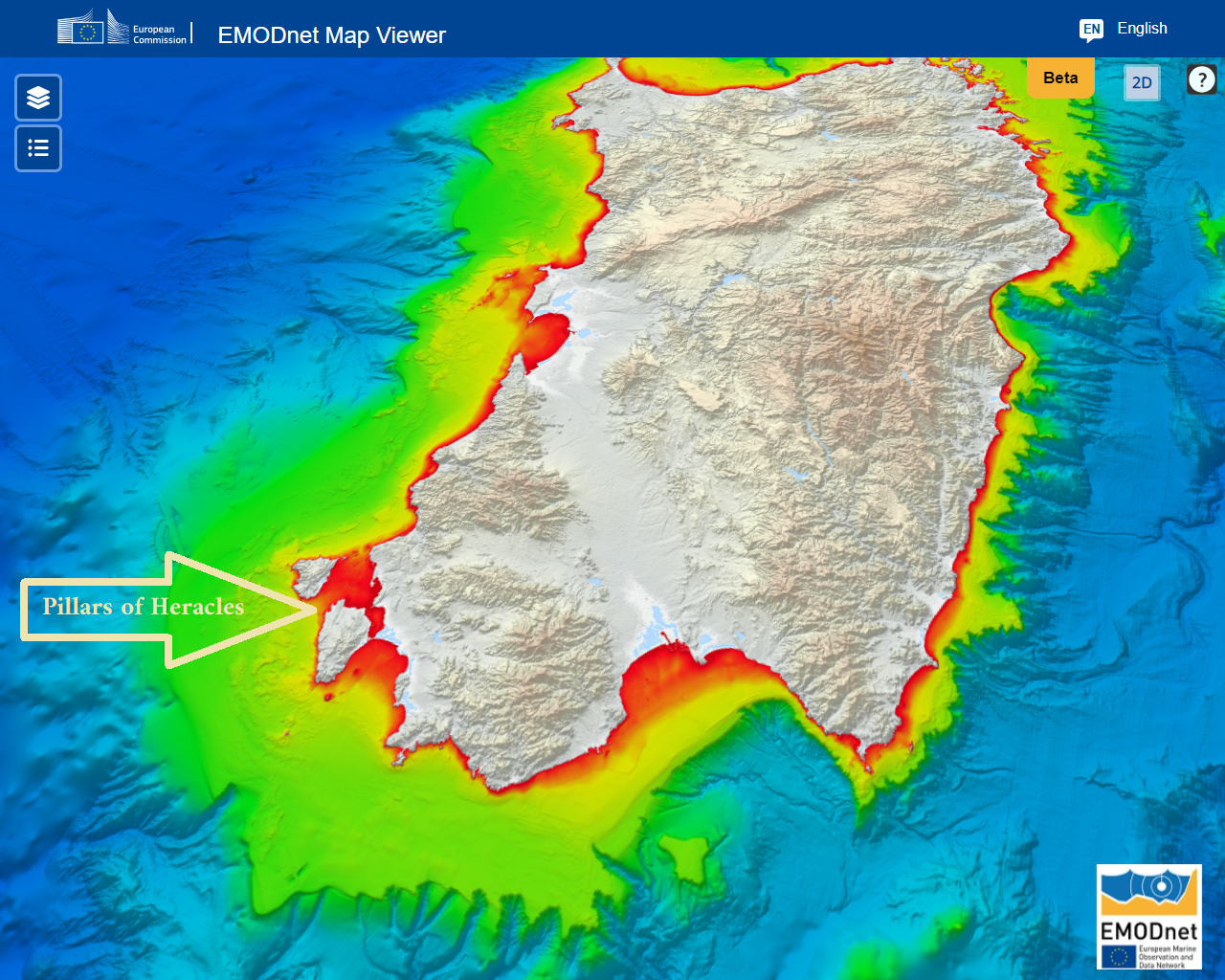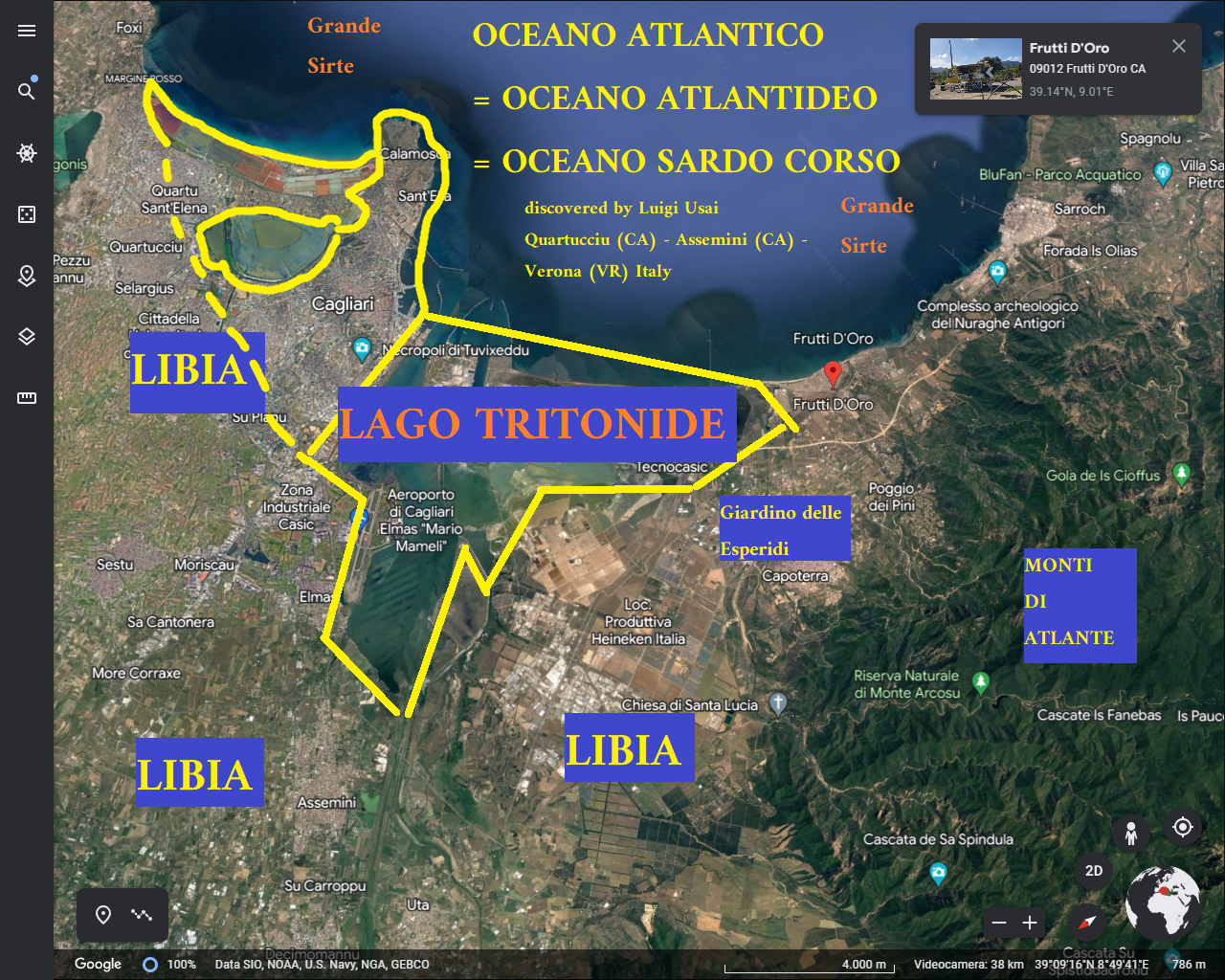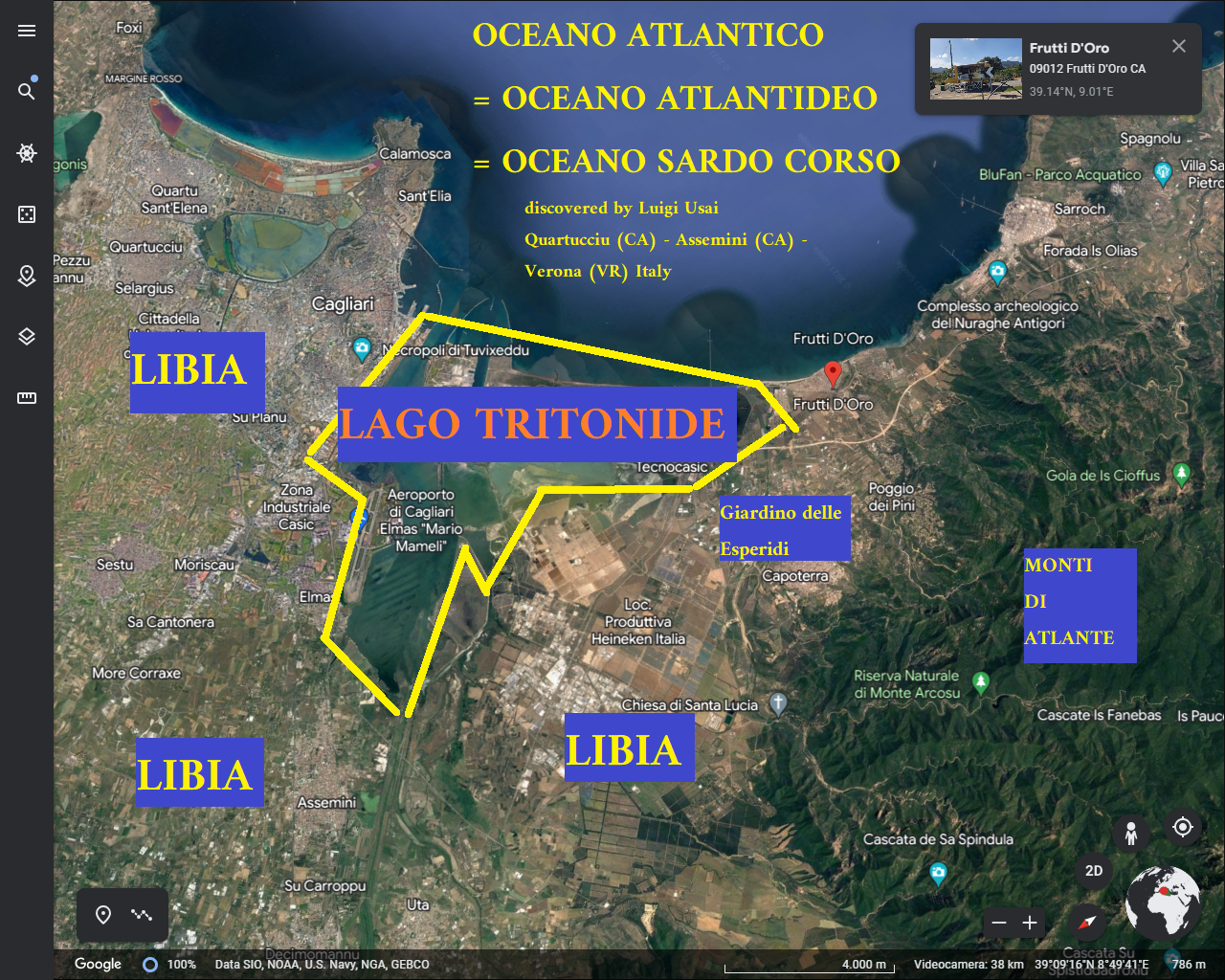The bathymetric lines of the Sardinian-Corsican block seem to show at least four elevations of the eustatic level one after the other; these level rises of the Paleolithic Atlantic Ocean, today called the Mediterranean Sea after a succession of nomenclatures in various languages and cultures: Mare Nostrum for the Romans, to contrast it with Mare di Atlas, or Atlantic Ocean.
In antiquity, the upheavals of the eustatic level of the Paleolithic Atlantic Ocean (which today is known by the name of the Mediterranean Sea and I will not tire of repeating it to allow the reader to assimilate this new and very important statement) could be understood by prehistorians as if were incredible “Floods”, “Universal Floods” to be precise, as handed down so far by multiple religions, myths and beliefs of the entire Mediterranean basin today. Perhaps the fact that it was called the Atlantic Ocean has already been reported by the Dear Prof. Sergio Frau (2002): even if he hadn’t reported it, it is an implicit consequence of the fact that the Pillars of Hercules were between Sicily and Tunisia. I bought Frau’s text, but unfortunately I’m too lazy to study it, too slow to read, moreover I have an incredible difficulty in understanding it, because the text (and the author) is so cultured and erudite that I cannot follow him in his reasoning, above all because these themes are very heavy for me and I don’t know them at all. Indeed, it is incredible that I understood this information, because I am absolutely not a specialist in these disciplines. Again: the Paleolithic Atlantic Ocean does not coincide with the Mediterranean: it stops at the strait between Sicily and Tunisia; the Mediterranean is its superset, as one would say in terms of set mathematics, as it also includes the other part of the sea, the one beyond the Pillars of Hercules where erroneously placed by Frau (2002), up to the Lebanese coasts. The Paleolithic-Mesolithic Atlantic Ocean is only that which surrounds the Sardinian-Corso-Atlantean geological block. because the text (and the author) is so cultured and erudite that I can’t follow him in his reasoning, above all because these themes are very heavy for me and I don’t know them at all. Indeed, it is incredible that I understood this information, because I am absolutely not a specialist in these disciplines. Again: the Paleolithic Atlantic Ocean does not coincide with the Mediterranean: it stops at the strait between Sicily and Tunisia; the Mediterranean is its superset, as one would say in terms of set mathematics, as it also includes the other part of the sea, the one beyond the Pillars of Hercules where erroneously placed by Frau (2002), up to the Lebanese coasts. The Paleolithic-Mesolithic Atlantic Ocean is only that which surrounds the Sardinian-Corso-Atlantean geological block. because the text (and the author) is so cultured and erudite that I can’t follow him in his reasoning, above all because these themes are very heavy for me and I don’t know them at all. Indeed, it is incredible that I understood this information, because I am absolutely not a specialist in these disciplines. Again: the Paleolithic Atlantic Ocean does not coincide with the Mediterranean: it stops at the strait between Sicily and Tunisia; the Mediterranean is its superset, as one would say in terms of set mathematics, as it also includes the other part of the sea, the one beyond the Pillars of Hercules where erroneously placed by Frau (2002), up to the Lebanese coasts. The Paleolithic-Mesolithic Atlantic Ocean is only that which surrounds the Sardinian-Corso-Atlantean geological block.
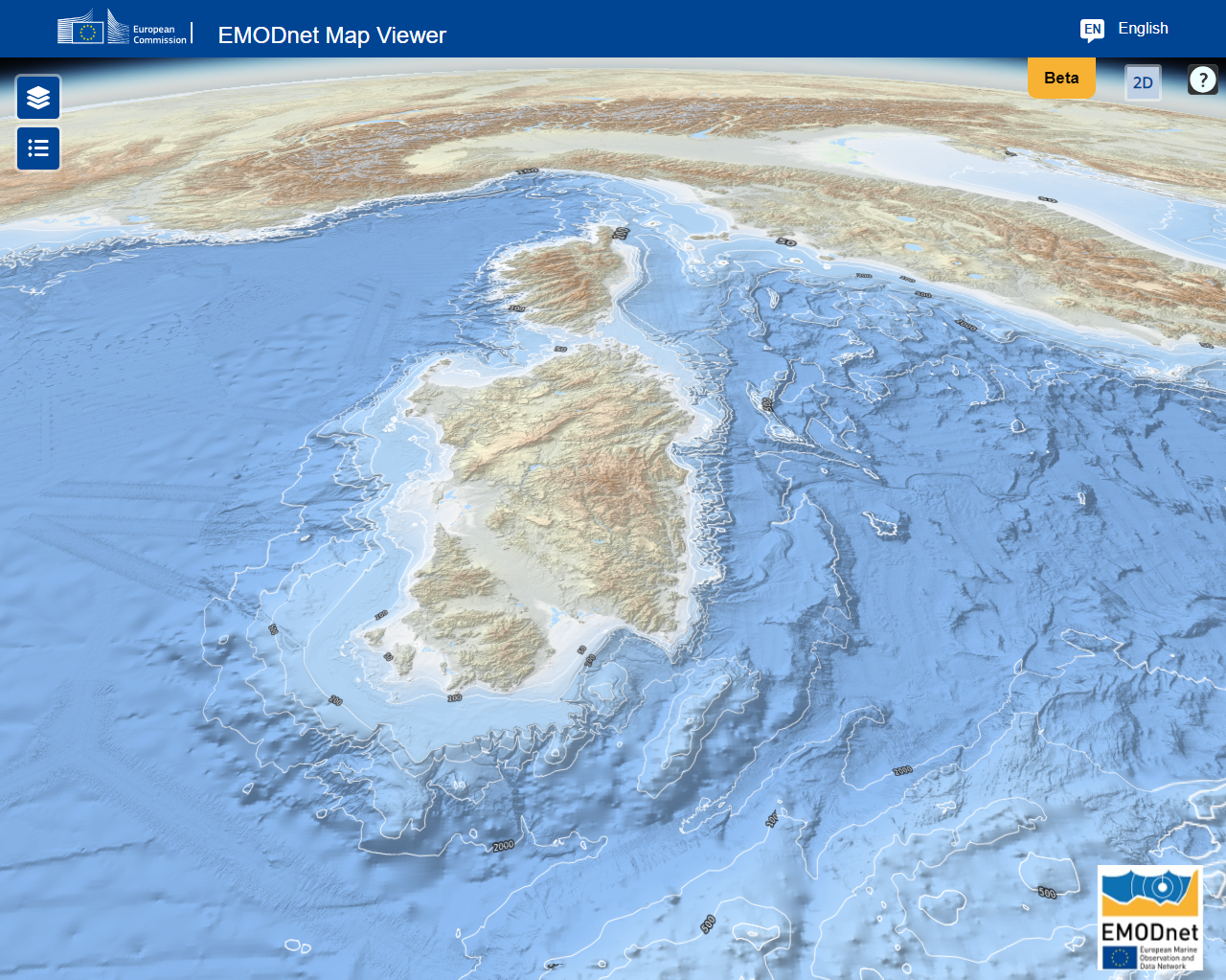
Surprising discoveries in Sardinia: Paleolithic artifacts dating back 500,000 years
Recent archaeological discoveries in Sardinia have brought to light Paleolithic artifacts dating back 500,000 years. The oldest artifacts found in Sardinia date back to the Lower Paleolithic and were found in Anglona, in the northern part of the island. These are flint and quartzite objects dating from between 450,000 and 120,000 years ago.
These artifacts represent some of the first evidence of human presence in Sardinia and provide us with valuable information on the life of the inhabitants of the island during the Lower Paleolithic. Flint and quartzite are two types of stone that were used to make tools and weapons during the Paleolithic.
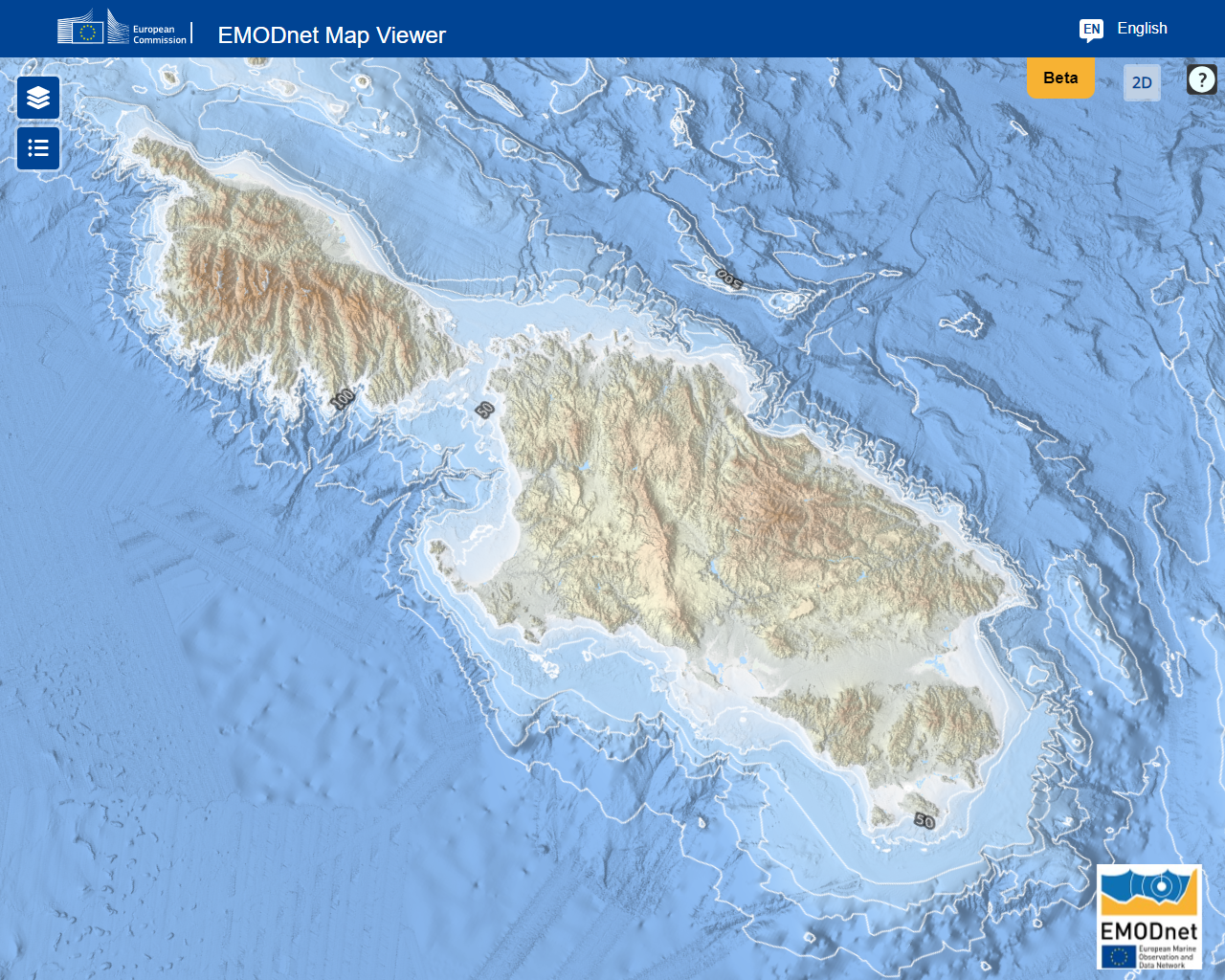
The Archaeological and Paleobotanical Museum of Perfugas exhibits finds from all over the Anglona area, including artefacts from the Lower Paleolithic (500,000-120,000 years ago). This museum offers visitors the opportunity to admire these ancient artefacts up close and to learn more about the history of prehistoric Sardinia.
If you want to know more about the Paleolithic artifacts found in Sardinia, I recommend you visit the Archaeological and Paleobotanical Museum of Perfugas or do more research on the subject. These archaeological discoveries represent a unique opportunity to deepen our knowledge of the history of Sardinia and the life of its ancient inhabitants.
A new paradigm shift is taking place, as explained by Thomas Kuhn in the text entitled “The structure of scientific revolutions”: the Sardinian-Corsican-Atlantean paradigm.
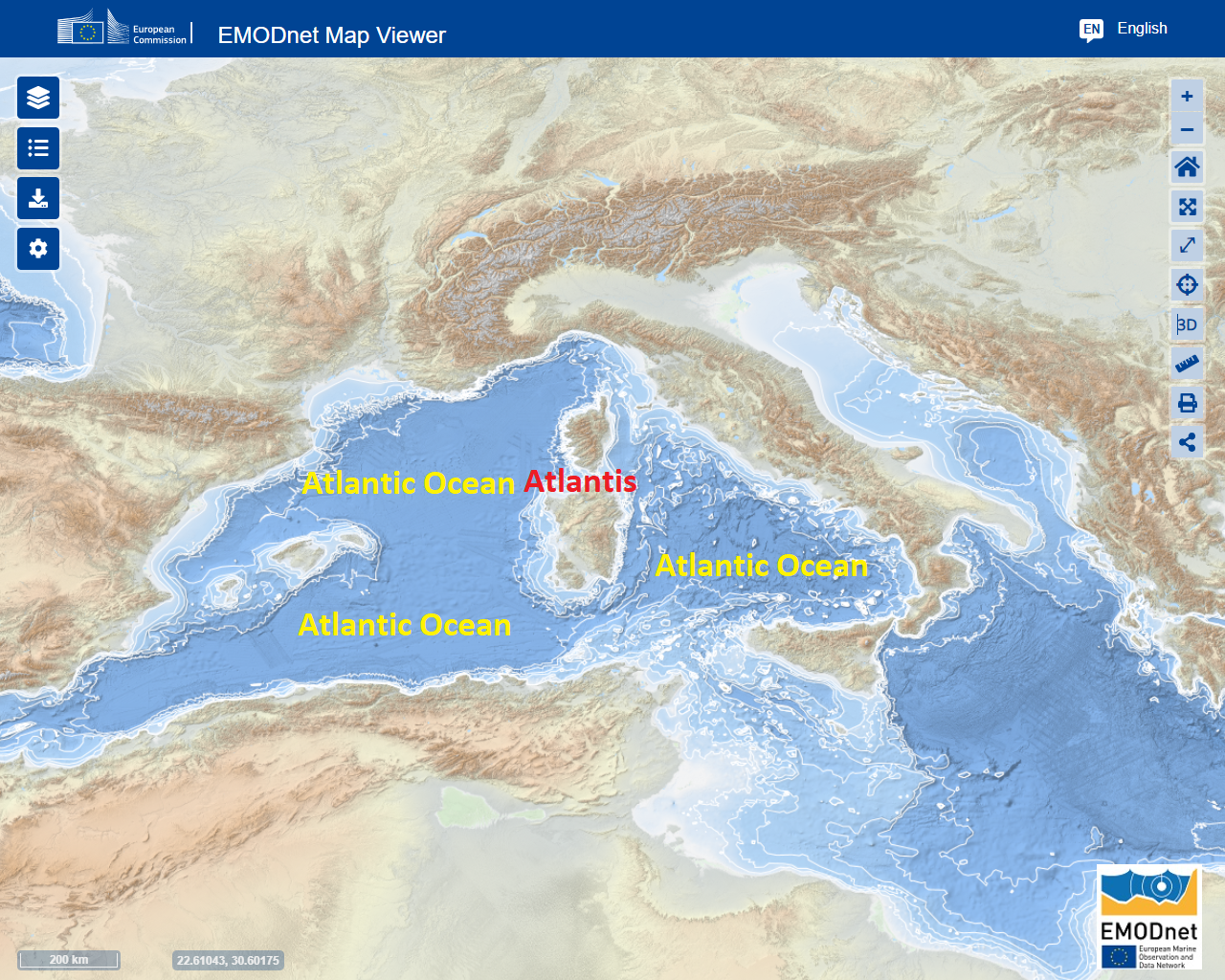
Attempted scientific demonstration of the existence of the Isle of Atlantis, which coincides with the Sardinian-Corsican geological block, henceforth called the Sardinian-Corsican-Atlantean block or Atlantis .
To evaluate a scientific theory, several criteria must be considered, such as consistency, falsifiability, predictability and verifiability. In this text, starting from version 138, I will try to respect these scientific criteria, studying them when necessary to better understand them. I’m still not able to make a scientific paper.
To evaluate the credibility of a source, several factors must be considered, such as the author’s authoritativeness, the quality of the information, the sources cited, the method used and the consensus of the scientific community. If a source doesn’t meet these criteria, it is likely to be unreliable or fake.
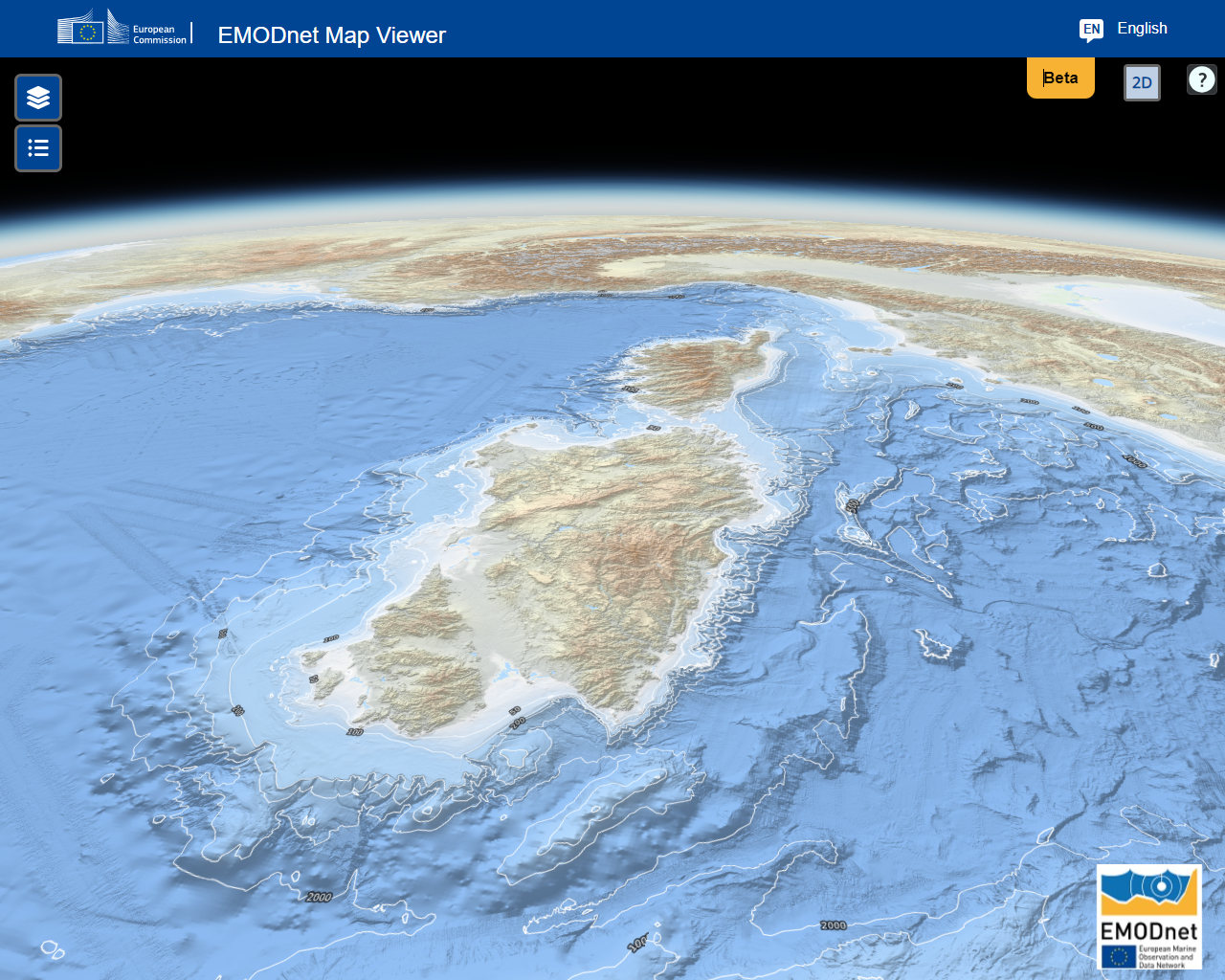
Scientific reinterpretation of the story about the Garden of the Hesperides
The Garden of the Hesperides gave golden fruits , and was located at the ends of the known earth; an analogy has been found with the apparently mythological story of the Hesperides in Sardinian toponymy: there is in fact a locality called Fruttidoro, located in the locality of Capoterra, in Sardinia. Capoterra, from the Sardinian Caputerra, then in Latin “Caput Terrae”, is the “head of the Earth”, i.e. the extreme edge known in antiquity (Mesolithic / early Neolithic, around about 11,600 years ago, to have an approximate but useful date understanding), while the current location of Fruttidoro in Capoterra would be the legendary Garden of the Hesperides. This new discovery has not yet been counter-validated by scholars, nor have stratigraphies been carried out for the relative counter-verification. The Garden of the Hesperides was located in the Atlantic Ocean, which as explained on the atlantisfound.it website, was the Mesolithic name of the sea that surrounded the island which was then Sardinian-Corso-Atlantean land. The Hesperides Islands must therefore have been the archaic names with which Sardinia and Corsica were defined in the millennia following the semi-submersion of the Sardinian-Corsican geological block. Hesperidum Insulae, “The Islands of the Evening”, because at sunset, when the Greeks looked towards the west, sailing in that direction from their most remote position, i.e. with great probability the island of Ischia, they saw 2 distant islands, which today are known with the names of Sardinia and Corsica, and which are plateaus of emerged land of the semi-submerged Sardinian-Corsican geological block. The linguist and glottologist Massimo Pittau analyzed the location of the Garden of the Hesperides, placing it presumably in Sardinia and pointing out that it was still a legend; I, on the other hand, in my bald ignorance, go further and propose that it is not a legend, but a real place located in Fruttidoro di Capoterra, according to what is stated in other terms by the myth. Obviously, a serious scholar should study all the toponymy of Capoterra and nearby localities, to verify the oldest names to which it is possible to go back and if in the past they were called in other ways. In any case, a good analysis based on satellite archeology would be appropriate, to highlight very ancient settlements, Mesolithic or Neolithic, present on the site or UNDER the site (because most likely by now they will be submerged by the superimposed layers over the millennia). Following these interpretations, we can analyze other aspects of mythology: Teti was a Sardinian. Peleus married a Sardinian, but the Greeks called them “nymphs of the sea”. The garden of the Hesperides is in Fruttidoro di Capoterra, in Sardinia, between the Atlas mountains, i.e. the Sulcis mountains, and the Paleolithic Atlantic Ocean, i.e. the current Mediterranean Sea.
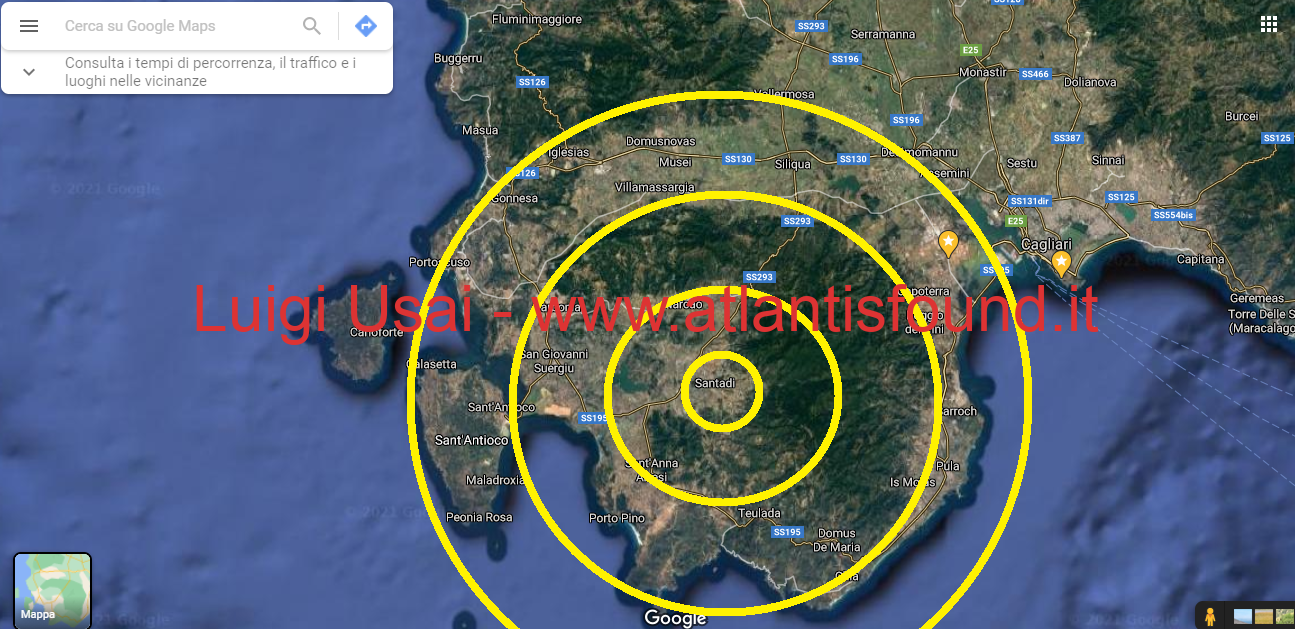
Why were they called the Atlas Mountains in ancient times? Because Sulcis was the capital of Atlantis, but above all because Poseidon initially surrounded the center of Sulcis by fencing it with circles of water and land, to protect Clito, when navigation did not yet exist, in an era currently still indefinite. Poseidon was an ancient Sardinian Corsican Atlantean ruler, he was not a God. We all know that the Pharaoh was seen as a God, but that in reality he was a man is known to all. This conception is called “euhemerism”. The first son of Poseidon and Clito, Atlas, first of 5 pairs of twins (10 brothers in total) took the name of the first King of Atlantis, and took possession of Sulcis. This is the reason why in ancient times they called the volcanic mountains of Sulcis with the name of Atlas Mountains.
Therefore, when in antiquity it was stated that the Garden of the Hesperides was located between the “Atlas Mountains” and the Atlantic Ocean (Paleolithic, i.e. the Mediterranean Sea), the geographical location is perfect and correct: Fruttidoro di Capoterra in fact is located between the Atlas Mountains and the Mediterranean, exactly where some ancient historians had placed it.
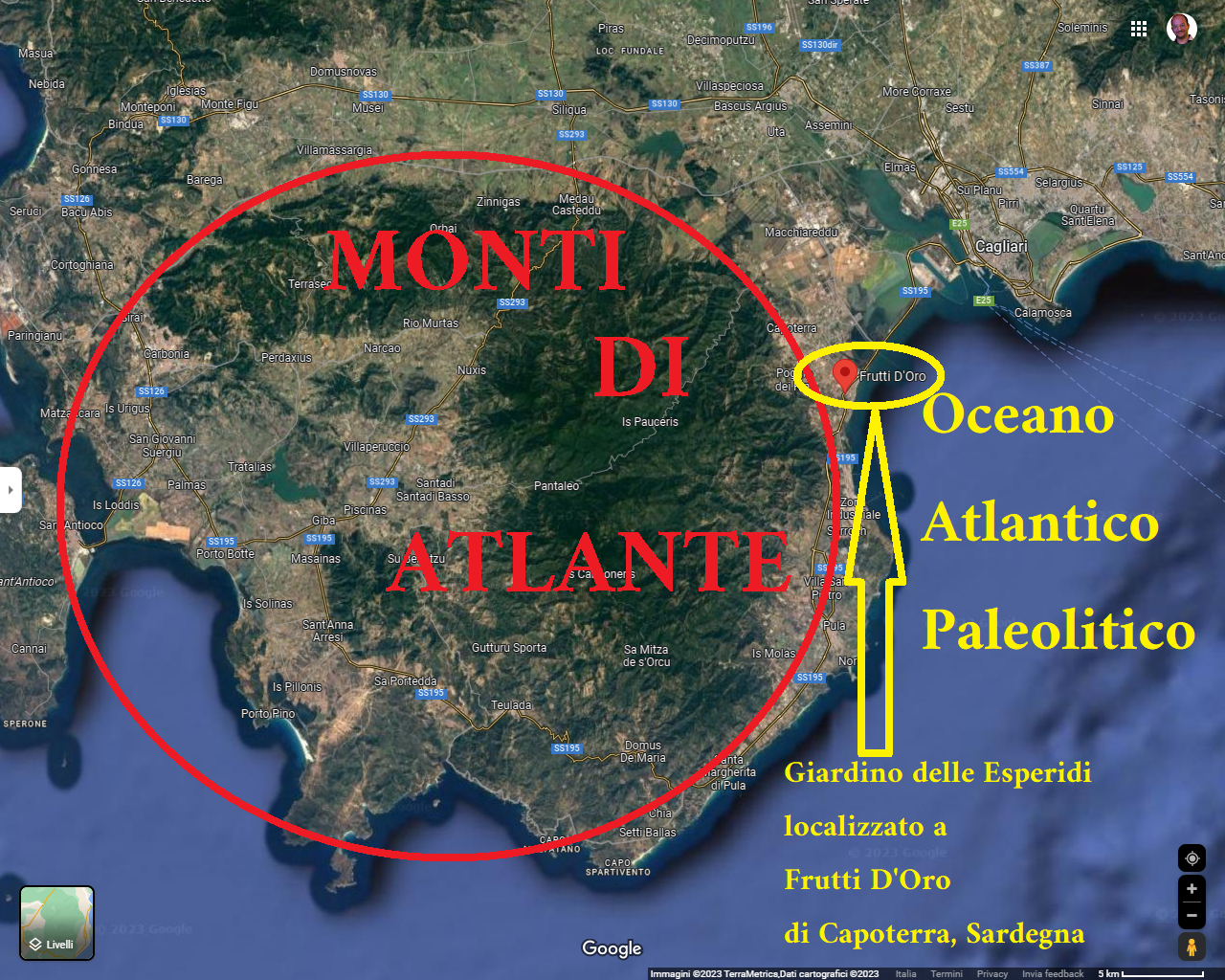
The mess occurred later, when the Atlantic Ocean was moved, as probably already pointed out before me by the Gent.mo and positively extraordinary Sergio Frau (2002), who pointed out the primordial position of the Pillars of Hercules, from which it may correctly be inferred that the Atlantic Ocean was immediately passed over them.
Teti was the eponym of the Sardinian city still called Teti today. Wild boar hunting therefore took place in Sardinia: this use still exists.
The very interesting contribution of Geopop showing the Sardinian Corso Atlantis island when it was land during the Paleolithic:
https://www.youtube.com/watch?v=JM-n3IqZRCo
Sources for finding Atlantis
There is genetic, tectonic, archaeological, hydrographic, geological, geographical, paleontological, phonological, onomastic, toponymic and linguistic evidence for the existence of Atlantis, which will be listed below on this page. The text will be corrected infinitely, in an attempt to create a readable text for the scientific community.
In this paragraph I will coherently collect the sources I used for the research of Atlantis.
Here is a list of some scientific sources that support the claim that Sardinia and Corsica were one large island in the Pleistocene:
- Submarine Geomorphology of the Southwestern Sardinian Continental Shelf (Mediterranean Sea): Insights into the Last Glacial Maximum Sea-Level Changes and Related Environments
- Preservation of Modern and MIS 5.5 Erosional Landforms and
Biological Structures as Sea Level Markers: A Matter of Luck? - Relative sea level change in Olbia Gulf (Sardinia, Italy), a historically important Mediterranean harbour
- Sea-level change during the Holocene in Sardinia and in the
northeastern Adriatic (central Mediterranean Sea) from
archaeological and geomorphological data
On the population of the Corsican Sardinian block it is possible to consult:
Taken from wikipedia:
- Mario Sanges, The first inhabitants of Sardinia ( PDF ), in Darwin Quaderni, January 2012, Darwin, 2012, pp. 32-39. URL accessed October 15, 2013 .
- ^ Jump to: a b Giulio Badini, Sardinia, first men arrived 250,000 years ago , in Archivio storico Corriere della Sera, Archiviostorico.corriere.i, 2002. URL viewed on 25 November 2013 (archived from the original url on 3 December 2013 ) .
- ^ www.nurighe.it – IL TAG , su nurighe.it. URL accessed May 4, 2016 .
- ^ Julien Vandevenne, Le doigt sur l’homo sardaignus? , at Archives du Quinzième jour du mois, mensuel de l’Université de Liège., www2.ulg.ac.be, 2002. Retrieved November 25, 2013 (archived from the original url on September 18, 2020) .
- ^ Barbara Wilkens, The phalanx of the Nurighe cave near Cheremule : revision and new information [ link broken ] , in Sardinia, Corsica et Baleares antiqvae: An International Journal of Archaeology, www.academia.edu, 2011. Retrieved 25 November 2013 .
- ^ Paolo Melis, Prehistoric and protohistoric research in Sardinia: new developments , in Architectures of prehistoric Sardinia: new hypotheses and research , Proceedings of the Nuoro conference of 15 October 2004, 2007, pp. 30-43
- ^ Sandra Guglielmi, Amsicora , the oldest inhabitant of Sardinia , on ArcheoIdea, Archeomilise.it, 2011. Retrieved 8 February 2015 .
- ^ Unione Sarda, Amsicora: a 9,000-year old man. Buried in Arbus, he is the father of Sardinians February 2015) .
- ^ Adn Kronos ( Archeologia, Amsicora found: Sardinia’s oldest human skeleton) , at www1.adnkronos.com, Adnkronos.com, 2011. Retrieved 8 February 2015 (archived from the original url on 4 March 2016) .
- ^ Sandra Guglielmi, “Amsicora”, the oldest inhabitant of Sardinia , on archeomolise.it, 2011. Retrieved 8 February 2015 .
- Sondaar, Paul; Elburg, Rengert; Hofmeijer, Gerard; Spaan, Andries; Visser, Hannie; Sanges, Mario; Martini, Fabio. (1993). The peopling of Sardinia in the late Pleistocene: new acquisition of a human fossil remains from the Corbeddu cave. Journal of Prehistoric Sciences, 45: 243-251.
1) Timaeus and Critias, two Platonic dialogues which are the original source of the story about Atlantis and its disappearance;
2) geological data, relating to the geological structure of the Sardo-Corsican block, and relating to the phenomenon of Meltwater Pulses, in particular Meltwater Pulse 1b; in particular the graben-horst structure present in present-day Sardinia and in Sulcis, and the Sinkholes present in Sulcis. In the Sulcis there is the phenomenon of sinkholes 1 2 3 . These are chasms that open up in the ground due to the subsidence of underground cavities. Some studies have hypothesized a possible correlation between sinkholes and human activities, such as mining or irrigation 1 2. Although at the moment I have not yet found any evidence that the sinkholes in the Sulcis have anything to do with Atlantis or with the shape of concentric furrows described by Plato, I am of the opinion that further studies on the matter could show not only a correlation, but probably also a stringent link of cause and effect: if indeed Sulcis was the capital of the island of Atlantis, then a flooding of the Sulcis could have caused the opening of sinkholes which caused the inhabited center to collapse and collapse, causing death and destruction in Atlantis , as told by Plato in Timaeus and Critias.
Among the geological, archaeological and archaeogenetic evidence, the University of Cagliari is mentioned on the page:
https://unica.it/unica/it/news_notizie_s1.page?contentId=NTZ60664
whose title is: Man in Sulcis already 9 thousand years before Christ, The confirmation comes from the new excavation campaign led at Su Carroppu by prof . Carlo Lugliè, professor of Prehistory and Protohistory
article dated 04 October 2017.
Among other sources on the subject:
THE SARDINIAN UNION
3 October 2017
Culture (Page 39 – Edition CA)
«Man at Su Carroppu already in the Mesolithic period»
ARCHEOLOGY. The discovery of the scholar Carlo Lugli is now confirmed by DNA tests
New data on the neolithisation of the coastal strip of south-western Sardinia | Layers. Archeology Territory Contexts (unica.it)
On the fact that the Villanovan populations could be Sardinian-Corsican migrations, it is possible to compare the statements with the following scientific paper:
Genome-wide analysis of Corsican population reveals a close affinity with Northern and Central Italy
3) bathymetric data, in particular related to the submerged structures found in the Sicily Channel, in the seamounts of Alfil Bank, Birsa Bank, Bouri Bank, El Haouaria Bank, in the Sicily-Malta Hyblean carbonate platform flanked by the Sicily-Malta Escarpment.
4) Some translations available online of the texts of the Temple of Edfu in Egypt;
5) the videos available online, in particular on Youtube, relating to the theories of Professor Sergio Frau and the geologist Mario Tozzi; these videos have helped and inspired me a lot, greatly enriching my basic culture on issues related to the research of Atlantis;
6) the text by Professor Marco Ciardi, Atlantis A scientific controversy from Colombo to Darwin, Carocci editore, Rome, 1st edition, November 2002; in particular, after studying Ciardi’s text, I understood thatthe texts of Timaeus and Critias contradicted the biblical chronology. An amanuensis writer who had translated these two passages would have asked his superior: “The Bible says that the world originated around 4000 BC: how is it possible that the Sardo-Corsican island dates back to 9600 BC?”. Faced with a moral dilemma that contradicted the Catholic Church, more or less as happened with Giordano Bruno and Galileo Galilei, and the publication of Descartes’ “Mondo”, probably the only acceptable solution was to undermine the credibility of the text conclusive, so that the date of 9600 was not considered valid or reliable by the known texts. The Romans, for their part, to counter the old name of the Mediterranean Sea, which in the past was called the Atlantic Sea or Atlantic Ocean, called it “Mare Nostrum”:
7) among the sources provided by linguistics and glottology, some videos, in particular present on youtube, on the works of Professor Salvatore Dedola relating to the Sardinian language and toponymy; newspaper articles and web pages dealing with the links between Sardinian, Corsican, Sicilian, Basque, Albanian and Romanian languages and dialects; the works explained in various youtube videos by Professor Bartolomeo Porcheddu; the ideas explained in some web pages on the linguistic affinities between the Sardinian languages and that of the Basque population, when treated by Professor Juan Martin Elexpuru. Basically, some scholars have already noticed the linguistic and genetic commonality of other peoples with the Sardinian one, but they had not been able to understand and justify the cause. Some have even understood the reverse meaning,
8) a decisive role was played by my ability to imagine what had happened in the past. It was crucial to understand that if there are submerged structures in the Sicilian Channel, which could also contain the structures called Pillars of Hercules, as stated by Frau, then there are pieces of ancient history, protohistory and prehistory that have not yet been discovered nor clarified by the scientific community. This allowed me a certain strategic advantage over other scientists: the fact of having in hand scientific data not yet formalized by science, which I could use to interpret the past and to try to reconstruct it. For example, on the Sicily-Malta continental shelf there is a rectangular structure of approximately 8 km x 19.5 km. This structure, which I discovered and made public, does not yet have a name.
Then not only the Corsican Sardinian Atlantis sank, but also the first Athens, which now, according to my interpretation, would be submerged in the submerged Hyblean carbonate platform Sicily Malta, bordered by the Sicily Malta escarpment, recently discovered by the scientific world and still in study and analysis phase.
10) the archaeogenetic research carried out by scholars of various universities, including the University of Cagliari, from which it can be deduced that present-day Sardinia was inhabited even eleven thousand years ago; in particular, a video containing the news entitled “Su Carroppu” , enlightened me a lot in this regard. The Sardinian news program “Su Carroppu” explained online that archaeogenetic traces had been found of a Sardinian population with a genome almost completely different from that of the Neolithic populations that colonized the island about three thousand years later .
The description made during the brief viewing of this newscast enlightened my soul to the awareness that this population of eleven thousand years ago has characteristics that are perfectly congruent with the description of the Atlantean people: this people mainly preyed on marine resources; this population of eleven thousand years ago in Sardinia lived above all in the coastal area; lived in rock shelters or caves; so slowly I became aware that in the Sulcis there are various caves, and this was perfectly consistent with all my Atlantean theory. The caves of Acquacadda; the Is Zuddas caves; the caves of Neptune, located in Alghero in present-day Sardinia.
11) The seismic anomaly caused by the slab roll-back which would have caused the sinking of the Sardinian-Corsican geological block 1 2 .
12) The bathymetric anomalies that reveal possible underwater constructions in the Mediterranean 1 .
13) The war between Atlantis and Athens finished in 9600 BC described by Plato and confirmed by some archaeological finds 3 .
14) In confirmation of possible Sardinian-Corsican migrations, the fact that the prehistoric man found and known as the Similaun Mummy (in German Mumie vom Similaun ), also Similaun man , Hauslabjoch man and familiarly Ötzi , is of Sardinian origin . This is just one of the many discoveries that go to show a scenario consistent with the theory of a Paleolithic Sardinian Corsican Atlantis, then semi-submerged for reasons yet to be ascertained. The Sardinian Corso Atlanteans migrated throughout Europe, exporting uses and customs, language, ways of doing and saying, in a word: exporting culture.
I will update the sources as I remember where I drew from to build my theory on Corsican Sardinian Atlantis.
The Hesperides Islands and the Garden of the Hesperides
The Garden of the Hesperides gave golden fruits, and was located at the ends of the known earth; an analogy has been found with the apparently mythological story of the Hesperides in Sardinian toponymy: there is in fact a locality called Fruttidoro, located in the locality of Capoterra, in Sardinia. Capoterra, from the Sardinian Caputerra, then in Latin “Caput Terrae”, is the “head of the Earth”, i.e. the extreme edge known in antiquity (Mesolithic / early Neolithic, around about 11,600 years ago, to have an approximate but useful date understanding), while the current location of Fruttidoro in Capoterra would be the legendary Garden of the Hesperides. This new discovery has not yet been counter-validated by scholars, nor have stratigraphies been carried out for the relative counter-verification.atlantisfound.it, was the Mesolithic name of the sea that surrounded the island which was then Sardinian-Corso-Atlantean land. The Hesperides Islands must therefore have been the archaic names with which Sardinia and Corsica were defined in the millennia following the semi-submersion of the Sardinian-Corsican geological block. Hesperidum Insulae, “The Islands of the Evening”, because at sunset, when the Greeks looked towards the west, sailing in that direction from their most remote position, i.e. with great probability the island of Ischia, they saw 2 distant islands, which today are known with the names of Sardinia and Corsica, and which are plateaus of emerged land of the semi-submerged Sardinian-Corsican geological block. The linguist and glottologist Massimo Pittau analyzed the location of the Garden of the Hesperides, placing it presumably in Sardinia and pointing out that it was still a legend; I, on the other hand, in my bald ignorance, go further and propose that it is not a legend, but a real place located in Fruttidoro di Capoterra, according to what is stated in other terms by the myth. Obviously, a serious scholar should study all the toponymy of Capoterra and nearby localities, to verify the oldest names to which it is possible to go back and if in the past they were called in other ways. In any case, a good analysis based on satellite archeology would be appropriate, to highlight very ancient settlements, Mesolithic or Neolithic, present on the site or UNDER the site (because most likely by now they will be submerged by the superimposed layers over the millennia).
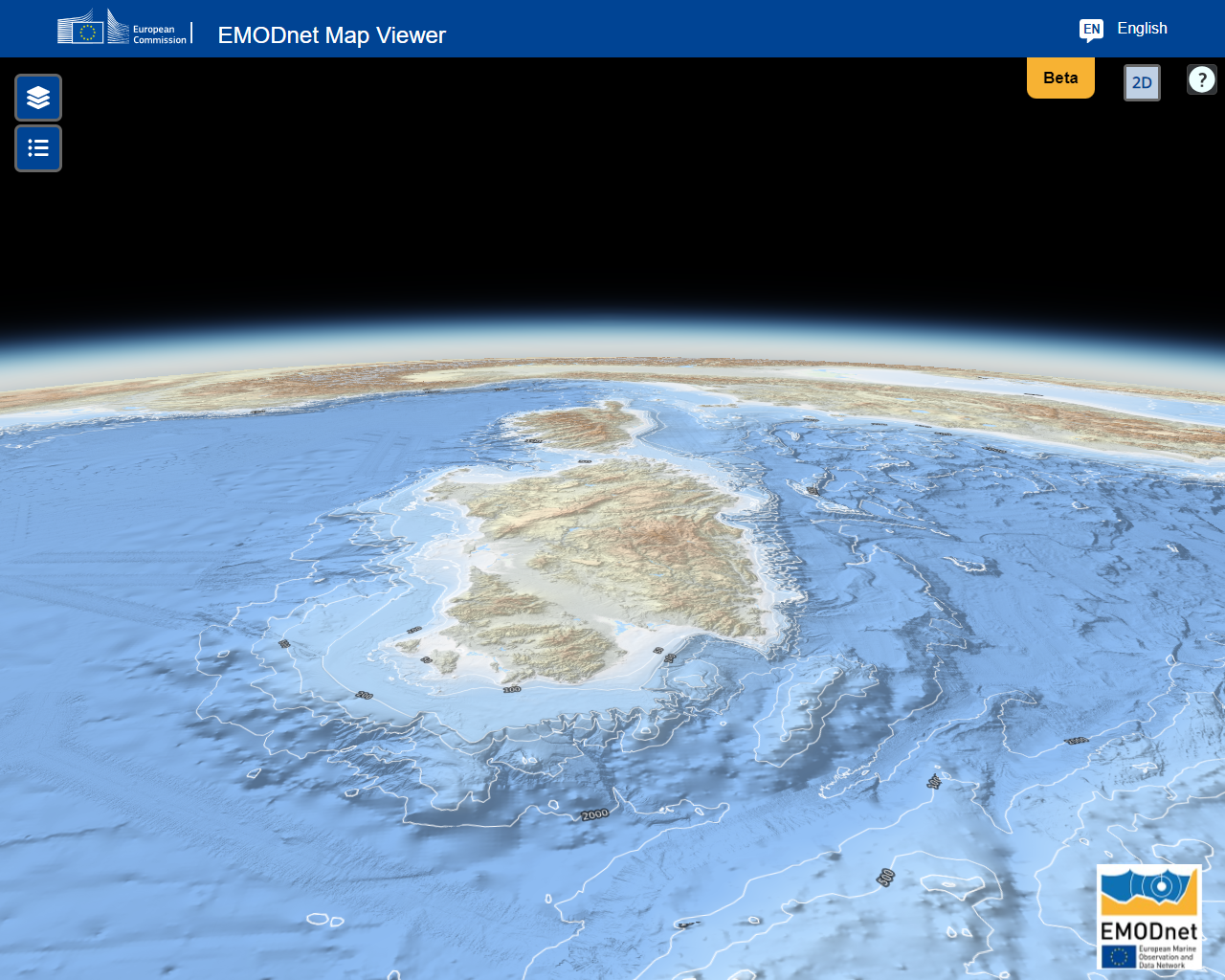
ATLANTIS AS A HIGHLY DEVELOPED AND TECHNOLOGICALLY ADVANCED CIVILIZATION.
When Plato describes the Sardo-Corsican Atlantean block as a highly developed and technologically advanced civilization, this sentence must be read in the context in which the Sardo-Corsican Atlantis existed, i.e. before its partial submersion in 9600 BC, i.e. about eleven thousand and six hundred years ago. However, many Plato readers, when they read the phrase “highly developed and technologically advanced”, believe that Plato refers to us who live in 2023 after Christ, so they believe that when we speak of technologically advanced population, they must have laser beams , teleportation, supercomputers equipped with super artificial intelligences… This mistake is made not only by many readers, but also by directors and writers; for example, the Disney animated film called Atlantis – The Lost Empire, shows that the inhabitants of Atlantis would have technologies such as flying motorcycles, with a system that appears to be anti-gravity. The Sardinian Corsican Atlantean theory instead states that the Atlantean population, which populated in particular the paleocoasts of the Sardinian Corsican block, today called by science with the name of “submerged Sardinian-Corsican continental platform”, was technologically advanced compared to the other populations of its time, i.e. those contemporary to her and who lived in the period prior to 11600 (eleven thousand and six hundred) years ago.
To give a clear example: on the wikipedia Chariot_(transport) page, we read that “The first chariot ascertained in Mesopotamian documents therefore dates back to 3000 BC, found in a bas-relief in Ur called the chariot of felines, in which the chariot made up of solid wheels with three sectors appeared, with integral axle and wheel and a pin fixed to a frame, which in the case of hearses, reached the size of 50 cm by 65 cm”. But in Plato’s descriptions, Atlantis had war chariots even before its submersion in 9600 BC. According to my Sardinian Corsican Atlantean theory, this is what “technologically advanced” means. The Atlanteans were experts in canalization, in making irrigation channels. This was advanced technology, compared to many other peoples, according to Plato, in 9600 BC and even before the sinking.
The Mass Media, unfortunately, and many occultists who have dealt with the Atlantis theme, have unfortunately contributed to inserting chaotic and confusing elements in the search for the submerged island, so even today many people expect that there are futuristic technologies in Atlantis even for us today, but this is simply a logical fallacy of reasoning.
ANALYSIS OF THEORIES ABOUT ATLANTIS THAT CONTRADICT MY THEORY
I cannot ignore the other interpretations of Plato and the historical and geographical evidences that contradict my hypothesis: therefore in this section I will deal precisely with this, that is to analyze the individual theories one by one and try to show the weak and strong points of each re-reading them in the light of my own peculiar interpretation. To do this, I will use the texts of the various authors and try to disassemble them piece by piece. This is not what I would like to do in life, but unfortunately I have to because I want to speed up the process of recognizing my potential discoveries.
In the Temple of Edfu the Corsican Atlantean Sardinian island, currently semi-submerged, is also called “The Primordial Island”, “Egg Island”, “Trampling Island”, “Combat Island”, “Island of Peace”; it is located in the “Eternal Lake” (the Eternal Lake is now called the Mediterranean Sea). The texts of the Timaeus and the Critias state things very similar to those written in hieroglyphics in the Temple of Edfu, using different words and circumlocutions. Combining this information together, it is possible to obtain new information on the currently semi-submerged Sardinian-Corsican-Atlantean geological block.
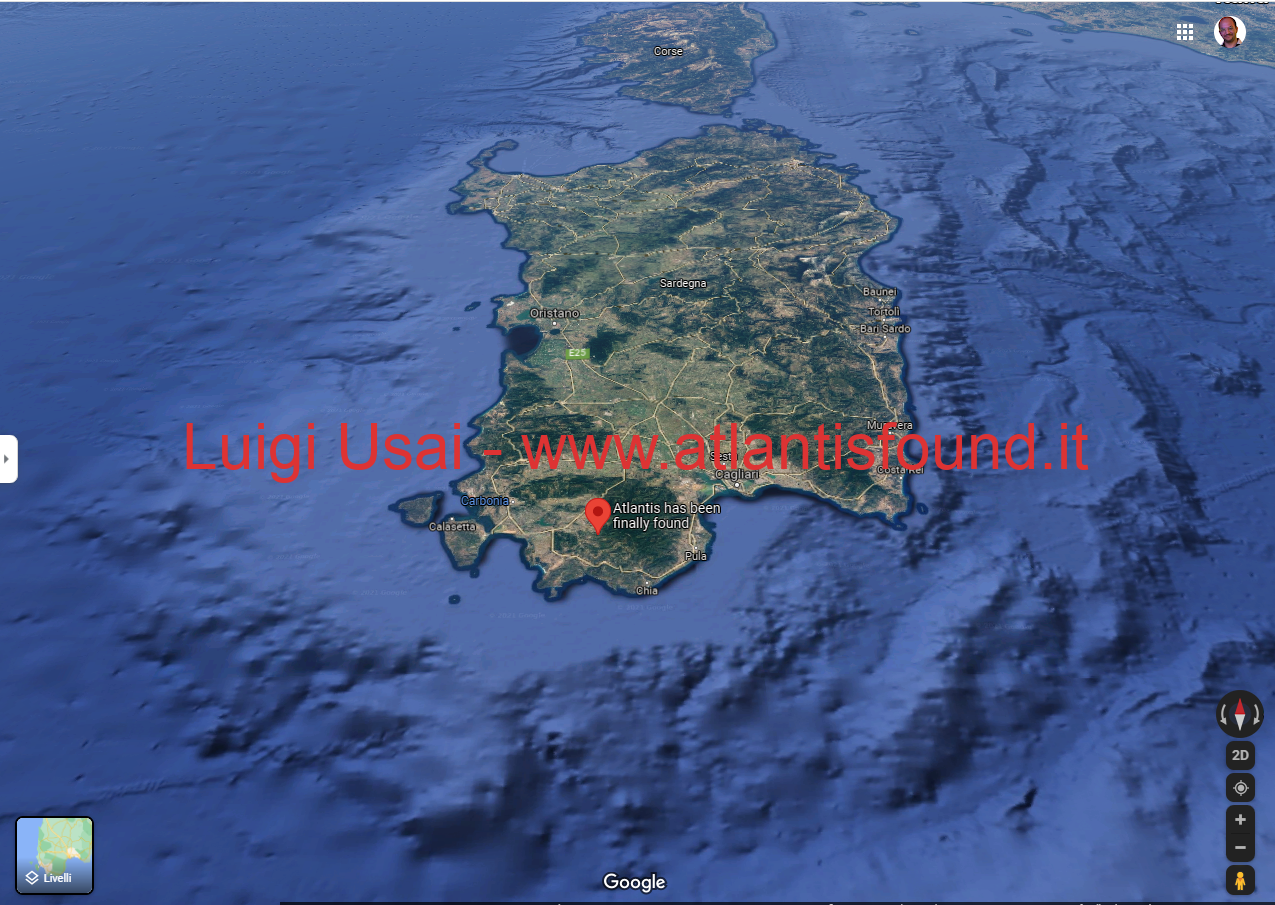
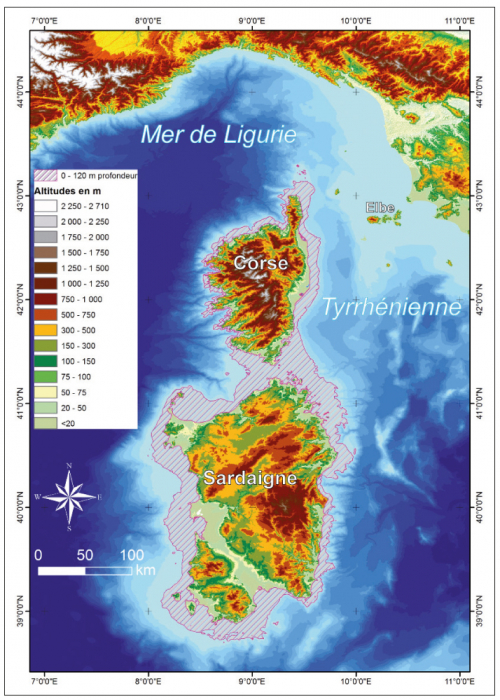
Atlantis is the name given by the Egyptians to the semi-submerged Sardinian-Corsican geological block when it was dry land, before its submersion/sinking around 9600 BC . It is effectively semi-submerged, as the Platonic historical account of Atlantis narrates, but two plateaus have remained out of the water, and our civilization has given them the name of “Sardinia” and “Corsica” . There was the “elephant species”, as Plato says, in fact there was the Mammuthus Lamarmorae .
The currently semi-submerged Sardo Corso Atlantide was the largest of all the islands; it was located in the center of the current Mediterranean, which was then called the sea of Atlantis, or the Atlantic Ocean, called in later times with many names, among which the Egyptians will use “The Great Green”, “The Eternal Lake” to name a few. It was very heavily forested, and this is still true and valid. The climate was particularly mild, and this is still true today: in fact the sea has functions similar to those of a condenser in an electrical circuit: it dampens the hot climate by partially absorbing it, and mitigates the cold climates by releasing the previously accumulated heat. It was rich in minerals, and this is still true today, so we can imagine what the Sardinian-Corsican block must have been like over 11,600 years ago.
It was ancient for the ancients, and we have an infinite number of proofs: geology teaches us that Sardinian rocks are over half a billion years old. The tower builders lived there, and we know this for sure, so much so that an era has even been defined as “Nuragic”, and studied extensively enough to provide a great deal of valid scientific documentation. It must have been located beyond the Pillars of Hercules, and this too seems to be correct, after the findings I made in El Haouaria Bank and Birsa Bank.
The catastrophe mentioned by Plato must have been the geological phenomenon of partial submersion of the Sardinian-Corsican-Atlantean block, caused by the Slab Roll-Back, by the possible presence of a tectonic fault which passes under the Sulcis and continues, on one side towards Gibraltar and from the other towards Pompeii and Herculaneum, and visible using the satellite and bathymetric map of Google Maps, available free online. Also, the Meltwater Pulses also happened at that time in history. The era in which the Sardinian-Corsican block was called Atlantis was therefore before 9600 BC. The mud caused by marine erosion and currents made it impossible to sail along the island by ship, so the island probably remained unreachable for a few centuries, thus helping to make people forget the power of this warlike ancient people. Atlantis has a north-south orientation, as stated by Plato. The northern part is full of excellent winds for navigation, and in fact between Corsica and Sardinia there is one of the best sailing schools in Europe. The euhemeristic vision was correct: Poseidon was a very ancient ruler of the Sardinian-Corsican island when it was still dry land, then deified.
Why are there no archaeological or historical traces of such an advanced and powerful civilization in the Corsican Sardinian block? Because the population particularly preyed on marine resources, such as the two individuals found at the Su Carroppu rock shelter in Sirri, and to do so they lived on the Atlantean paleocoasts, today called the Sardinian Corsican Continental Platform. Part of the civilization and population that were located on the paleocoasts were submerged and then swept away by about eleven thousand and six hundred years of sea currents, which transformed the paleocoasts into a continental platform that now surrounds the Sardinian geological block. Furthermore, we know from experience that sedimentary deposits stratify over the years: for example, the Roman remains of about two thousand years ago are potentially found under a few meters of sediment and debris. Therefore, strictly speaking, if a scholar wanted to find the sedimentary layers that contain the remains of the Atlantean civilization, he would have to make a stratigraphic study that reaches the stratigraphy of 9600 BC, i.e. the layer of about 11600 years ago.
The rock shelter Su Carroppu has returned the DNA of two out of three individuals, of a population with almost entirely different DNA from the DNA of the population that subsequently colonized the island of Sardinia three thousand years later. Therefore, we can temporarily hypothesize that the two individuals analyzed at Su Carroppu di Sirri are of Atlantean population. From this hypothesis, it can be deduced that the Atlanteans, in addition to plundering marine resources and living in the paleocoasts, lived in caves or in rock shelters. Various very ancient caves are concentrated in Sulcis: the caves of Is Zuddas; the cave of Acquacadda; and other caves that I am currently unable to list, but may slowly be added to this list. Therefore, in order to disprove my theory, it would be enough to carry out stratigraphic analyzes in these caves, to prove that they were not inhabited in 9600 BC or before. Indeed Plato states that the Atlantean catastrophe dates back nine thousand years before Solon’s journey to Sais in Egypt, and this journey took place approximately in 590 BC. From these statements, another very important question can also be answered, given below.
If the Atlantean civilization was as advanced and powerful as Plato says, it should have left traces on the mainland as well, not just on the paleocoasts. And in fact, in my opinion, he left the traces in the caves around the plateau of Atlantis which now emerges from the sea and which has been called, by our civilization, with the name of Sardinia. In fact, remains from about 20,000 years ago were found in the Lanaittu cave, and this is perfectly consistent with the Sardinian-Corsican Atlantis theory. Atlantis was also inhabited 20,000 years ago. Indeed, at present it seems that Sardinia was inhabited since at least 300,000 years ago. That’s why Plato says it was “ancient for the ancients”. And this would also be why the priest of the goddess Neith in Sais told Solon that the Greeks were never old, they were young men, and that their mythology was very much like children’s fairy tales. The priest was trying to explain to Solon that the Greeks had lost the memory of what happened between the Sardinian Corsican Atlantis and the first Athens, because the survivors were not literate and could not write and pass on the memory of what happened around 9600 BC .
Everything stated is coherent, as a correct scientific theory must be. So the traces of the Atlanteans, endowed with different DNA already classified by the archaeogenetic studies carried out by the Department of Prehistory of the University of Cagliari together with the University of Florence and Ferrara and published in the Scientific Report, must be sought in the rock shelters of all Sardinia and Corsica and in the caves scattered in these two islands, which are actually plateaus emerged out of the sea of the underlying island of Atlantis. Atlantis was one of the names that the Egyptians gave to this island, which in the walls of the temple of Edfu in Egypt is also called Trampling Island, War Island, Peace Island, Egg Island etc. Re-reading and analyzing the texts of the temple of Edfu in this key,
How can we explain the fact that Plato describes Atlantis as a circular island with a navigable channel in the center and a series of concentric rings of land and water, while the Sardinian-Corsican block has an irregular shape and does not have these characteristics? Because the description in rings does not concern the entire Atlantean Corsican Sardinian block, but only the capital of Atlantis, the current Sulcis. As I have previously explained, an almost circular structure is present in the Sulcis, of the dimensions indicated by Plato, but after eleven thousand and six hundred years of rains, floods, tectonic changes caused by the graben-horst structure of the Sulcis, and tectonic changes caused by the Sinkholes del Sulcis, have meant that these portions of land, which present the very ancient structures reported by Plato, such as the Temple of Poseidon, have moved from their original location. For which a serious and rigorous stratigraphic investigation is needed. I am neither an archaeologist, nor a stratigrapher, nor a geologist, so I am not able to deal with this analysis myself. However, I believe that I have made a potentially important contribution to research with all this information.
There is evidence of contact between the Egyptians and the inhabitants of the Atlantean plateau called Sardinia: in fact, there are at least about 300 archaeological finds that scholars define as “Egyptizing” . In recent days an agreement has been signed by the Director Luana Toniolo and the Director of the foundation museum of Egyptian antiquities in Turin, Christian Greco, for the study and analysis of these finds.
Plato described Atlantis as an island larger than Libya and Asia combined: this is very possible, as at the present time we do not know what the exact size of Libya and Asia was in 9600 BC. So we could proceed with an inverse reasoning: assuming that Plato reported authentic and truthful Egyptian sources, we can therefore deduce that in 9600 BC Libya and Asia were two geographical zones that covered a smaller geographical area than that covered by the Sardinian geological block -course currently submerged under the Mediterranean. Furthermore, the Libya of 9600 BC may not correspond at all with present-day Libya or with the concept of “Africa”. Indeed, the discoveries made by Luigi Usai in Birsa Bank, El Haouaria Bank, in the Sicily-Malta Hyblaean carbonate continental shelf, flanked by the Sicily-Malta Escarpment, they show vast territories currently unknown to archeology and official history, for which the Scientific Community has yet to clarify what vanished civilizations we are dealing with, whether they are actually submerged buildings and cities; what civilizations they are; why are they submerged; when they were submerged, due to what events. In short, the new discoveries on the Mediterranean seabed open up extremely interesting and innovative scenarios.
Why is there no concrete archaeological evidence of its existence in the Sardinian-Corsican block? Because the Sardinian archaeologists stopped to analyze the layers up to the nuraghic; at present it would seem that no one has excavated up to the stratigraphic layers of 9600 BC, thus making it impossible to have archaeological evidence, which therefore has never been sought, as the Sardinian academic world, in its almost total entirety, believed that Atlantis was fruit of Plato’s imagination, as various archaeologists affirm in many videos and texts published online, for example at the Seminary called “Sa Mesa Archeotunda”.
POSSIBILITY OF THE FINDING OF ANCIENT ATHENS FROM 9600 BC

On the submerged Iblea Sicily-Malta carbonate continental shelf , flanked by the Sicily-Malta Escarpment , Dr. Luigi Usai (the writer) found a perfectly rectangular structure on what appear to be the Mesolithic paleocoasts of currently submerged eastern Sicily. Upon closer analysis, it was possible to ascertain the presence of structures with perfectly geometric shapes, which appear to be man-made. More studies are needed for understanding; however, it is already possible to consult online images of this possible archaeological find.
Video of the potential discovery:

HYPOTHESIS ON THE FIRST ATHENS SUBMERGED AROUND 9600 BC TOGETHER WITH ATLANTIS
If what Plato said about Atlantis is indeed a historical event, as stated in Timaeus and Critias, then one could speculate that this is the first Athens, submerged in 9600 BC. If this turns out to be true, everything Plato said has an objective confirmation in the real world. Of course it would be very strange for the First Athens to be based in Sicily. The important point to underline is that there seems to be a lot of objective evidence: bathymetry is a science. So bathymetric maps are also part of the tools that can be used by the scientific method. Some scholars have underlined that sometimes “artifacts” appear on the seabed, caused by bad data acquisition. However, after about 20 years in the IT sector, I have sufficient knowledge of the facts to establish that the possibility of these artifacts being erroneous is extremely low, otherwise I would have had to find rectangles in other parts of the world, which has never happened, not even exploring the depths of the world for two years consecutive approx. The submerged rectangle is also present in a point that appears to be the Mesolithic palaeocoast, so it is even more probable that it is a truly existing anthropic structure. Also, the resolution has changed and improved over the past year. If it were an artifact, the new detections should have erased the error and overwritten it with the correct data, but this hasn’t happened yet. not even exploring the seabed around the world for about two consecutive years. The submerged rectangle is also present in a point that appears to be the Mesolithic palaeocoast, so it is even more probable that it is a truly existing anthropic structure. Also, the resolution has changed and improved over the past year. If it were an artifact, the new detections should have erased the error and overwritten it with the correct data, but this hasn’t happened yet. not even exploring the seabed around the world for about two consecutive years. The submerged rectangle is also present in a point that appears to be the Mesolithic palaeocoast, so it is even more probable that it is a truly existing anthropic structure. Also, the resolution has changed and improved over the past year. If it were an artifact, the new detections should have erased the error and overwritten it with the correct data, but this hasn’t happened yet.





TOPONYMY AND NAME DAY
In the Sardinian-Corsican block the toponymy, very useful to archaeologists, clearly recalls the sources of hot and cold water placed according to the Platonic story on the Island of Atlantis by Poseidon: there are fractions of villages called “Acquacadda” (hot water , in Sardinian Campidanese ), S’acqua callenti de basciu (The hot water below, in Campidanese Sardinian) and S’Acqua Callenti de Susu (The hot water above, in Campidanese Sardinian dialect), while in the nearby town of Siliqua it is the cold water source of Zinnigas is still present today; in Siliqua the “ Castello d’Acquafredda ” is all that remains of the medieval citadel of Acquafredda. In short, even toponymy recalls the Platonic myth. Furthermore, Solon heard the story in the Egyptian city of Sais , and Sais is also the name of a geographical fraction near Narcao: localities of lower Is Sais and upper Is Sais of Narcao (SU), in Sulcis in present-day Sardinia; it is also a Sardinian surname . The toponymy reappears in an apparently correct way, and precisely in the same geographical points (Sulcis, in present-day Sardinia) where the toponymy recalls the sources placed by Poseidon. And curiously, still in Sulcis, there is a locality called Piscinas … another toponymy that recalls the theme of water or flooding. While in relation to Egyptian toponymy, we find a place called “Terresoli ” (Land of the Sun, in Campidanese Sardinian dialect) which closely reminds us of Heliopolis (City of the Sun). As the Sulcis “s’esti furriau”, they called a fraction ” Furriadroxiu “; as many people died or were seriously injured, they called it “ Spistiddatroxiu “. In Sardinia we have Olbia , and Olbia also exists in ancient Egypt . At this point it is still difficult to prove, but the town of Sinnai in Sardinia could be related to Sinai in Egypt: this statement remains to be proved, but it no longer seems to be a coincidence: in-depth studies of the sector are needed. Carnac in France is famous for its megaliths, as is Karnak in Egypt. The name of the city is the same, but the phonetics are expressed with different consonant values, where K and C have the same semantic meaning, but different spelling.
We have seen the surname Sais , but the surname Usai is also interesting: the Usai mummy exists in Bologna , which demonstrates the contacts between the Sardinian-Corsican-Atlantean population and ancient Egypt. In fact, Usai is an exclusively Sardinian-Corsican-Atlantean surname: all over the world, anyone called Usai is of Sardinian-Corsican-Atlantean origins . So we have the presence of Sardinian-Corsican surnames in Ancient Egypt, and this should make us reflect. Furthermore, an engraving of an Egyptian boat was found in the Necropolis of Montessu in Santadi , in Sulcis. This further confirms the relations between Egypt and Sulcis of the Sardinian-Corsican-Atlantean geological block .Uras is a Sardinian surname and a Sardinian city . Together with the Mummia Usai, in Bologna, there are rooms with small bronzes, and the Nuragic small bronzes are known to all Sardinians . Abis is a Sardinian surname, Abis is a toponym from ancient Egypt. Olbia is a Sardinian city, Olbia is a city in Egypt. Uras is a Sardinian surname, Urasit is a Sardinian locality, and contains the theme of “Uranus”, which could be related to Poseidon. Toponymy and Onomastics, therefore, confirm the Platonic myth and also the relations with the Egyptians. The Egyptian finds are also found in other places in Sardinia, but here, for the moment, we will remain focused on the Atlantean theme.
3207 Sardinian toponyms begin with Funt (“funti” or “funtana” in Sardinian means “fountain” in Italian).
Sardinian surnames which are also names of towns, cities and geographical locations.
Before reading this article, it is good to study the excellent article on the page:
https://www.inliberta.it/piu-antichi-cognomi-sardi/
which allows a broad view on Sardinian surnames and which can suggest a Paleolithic or Neolithic birth of these surnames.
The island of Atlantis is described as “rich in water “. I thought, point-blank, of looking for Sardinian toponyms that contain the word Funt (in Sardinian a “Fonte” can be called “Funtana”).
To the page:
https://www.sardegnageoportale.it/webgis/ricercatoponimi/search
there are 3 text input fields: Toponym, Municipality and Type.
In the Toponym entry I inserted the letters Funt, so as to obtain all the words that begin in this way; usually they are words like Funti or Funtana, or source, in Sardinian Campidanese.
3207 toponyms are already obtained in this way, without doing any other research. I would say that 3207 toponyms, 11,000 years after the sinking of Atlantis, can already be a good guarantee of the truthfulness of what Plato stated in Timaeus and Critias, on the fact that the Corsican Atlantean Sardinian block was “rich in water”: Sassari , Thatari and Serramanna, 3 other toponyms, mean “rich in water” (in this regard, see the works of Prof. Salvatore Dedola).
In the Sardinian-Corsican block the toponymy, very useful to archaeologists, clearly recalls the sources of hot and cold water placed according to the Platonic story on the Island of Atlantis by Poseidon: there are fractions of villages called “Acquacadda” (hot water , in Sardinian Campidanese ), S’acqua callenti de basciu (The hot water below, in Campidanese Sardinian) and S’Acqua Callenti de Susu (The hot water above, in Campidanese Sardinian dialect), while in the nearby town of Siliqua it is the cold water source of Zinnigas is still present today; in Siliqua the ” Castello d’Acquafredda “. In short, even toponymy recalls the Platonic myth. Furthermore, Solon heard the tale in the Egyptian city of Sais , and Sais is a Sardinian surname, and Sardinia is a plateau emerged from the submerged Corsican Sardinian geological block, so everything still fits perfectly. Sais , in addition to being a surname belonging to the Sardinian-Corsican territory, is also the name of a geographical fraction near Narcao: localities of lower Is Sais and upper Is Sais of Narcao (SU), in Sulcis in present-day Sardinia . The toponymy reappears in an apparently correct way, and precisely in the same geographical points (Sulcis, in present-day Sardinia) where the toponymy recalls the sources placed by Poseidon. And curiously, still in Sulcis, there is a locality called Piscinas (can also be understood in Italian)… another toponymy that recalls the theme of water or flooding. While in relation to Egyptian toponymy, we find a locality called ” Terresoli ” (Land of the Sun, in Campidanese Sardinian dialect) which closely reminds us of Heliopolis (City of the Sun). As the Sulcis “s’esti furriau”, they called a fraction ” Furriadroxiu “; as many people died or were seriously injured, they called it “ Spistiddatroxiu “. Near Barbusi, near Carbonia in Sardinia, there is Acqua Callentis (hot water in Sardinian) and Caput Acquas. Furthermore, there is a hamlet called Su Peppi Mereu and there are Egyptian pharaohs called Pepi I and Pepi II (in Sardinian Pepi is the diminutive of Giuseppe) .
Mandas is a Sardinian surname and a Sardinian locality.
Nora is a Sardinian locality and Nora is a female name .
Lidia is a locality and Lidia is a female name ( Lydia (endonym: Śfard; in Greek: Λυδία; in Assyrian: Luddu; in Hebrew: Lûdîm) is an ancient historical region, i.e. a locality)
further confirmation of my statements : the city of Sardis or Sardis or Sardes (in Lydian 𐤳𐤱𐤠𐤭𐤣 , transliterated Sfard ; ancient Greek Σάρδεις , transliterated Sárdeis ; ancient Persian Sparda ) was an ancient city of Asia Minor (today Turkey ) which became the capital of the kingdom of Lydia in the 7th century BC
I repeat: the city of Sardis became the capital of Lydia.
Solinas is a Sardinian surname and a locality: Spiaggia Is Solinas.
Solanas is a Sardinian locality and a surname, this time Spanish, probably indicating Sardinian-Corsican migrations to Spain in antiquity.
Tunis is a Sardinian surname and is a locality ( Tunis, in Tunisia ).
Zara is a Sardinian surname and is a locality ( Zara in Croatia ).
Olianas is a Sardinian surname and Oliena is a Sardinian locality, which in Sardinian is called Oliana .
Ruggiu is a Sardinian surname and Monte Ruggiu is a locality.
Scano is a Sardinian surname, Scano Montiferru is a locality.
Pirastru is a Sardinian surname, Porto Pirastru is a locality.
Mattana is a Sardinian surname , Mattan I and Mattan II are Phoenician rulers.
Milia is a Sardinian surname and El Milia is a locality in Algeria and Miliana is a locality in Algeria.
Iunius Silanus is a surname and Silanus is a still existing Sardinian locality; then there is a strange similarity between the etymology of Silanus (a Sardinian village whose etymology means: woodland, of the woods) and the mythological figure of Silenus (taken from wikipedia –> The Sileni (also Silenoi ) are figures of Greek mythology, divinities minors of the woods, of wild and lascivious nature -> probably they were the Sardinians who lived in Silanus, from which they took their name).
Siddi is a Sardinian surname and Siddi is a locality in Sardinia.
Murgia is a Sardinian surname and “Le Murge” is a sub-region of Appulo-Lucana.
Sanna it is a Sardinian surname and Sannio is an ancient historical locality and the Samnites the people who lived there: however this may be a coincidence. However, all these strange “coincidences” must lead us to make new analyses, to rethink the past and to try to motivate these strange dozens and dozens of coincidences.
Given all these premises, it is not difficult to realize that:
Troia is a surname, Troja is a surname, and Troia is a locality in the province of Foggia and Troia is the famous mythological city… at this point one would suppose that Troia was a Sardinian-Corsican city . This hypothesis is also confirmed by the walls of Troy, built in concentric circles; comes the fact that there are Sardinians Ilenses Troes and the other name of Troy is Ilio ( Troes-Ilienses are a Sardinian tribe )…
Another anomaly to keep in mind is the presence of:
Gonnos fanadiga
Gonnos nò
Gonnos codina
Gonnos tramatza
Another toponymic anomaly: the presence of Biddanoa (Bidda noa means, in Sardinian, new city or new country, Villanuova or Villanova , in the Sardinian language); and the strange insistence of the term translated villanova wherever there is contact with Sardinian-Corsican culture: the Villanovan
Culture it is a facies that gave rise to the Etruscans, takes its name from the village of Villanova; according to my theory, the Villanovans were very ancient Sardinian-Corsican migrations, which is why a Nuragic bronze statue was later found on the bottom of Lake Bolsena inside a submerged Villanovan house; in Cagliari the Villanova district, but it may be a coincidence, because if I am not mistaken the nomenclature has medieval origins and I don’t know why it was called that; in Villanova di Guidonia (Rome) is the Maritime Theater of Hadrian, known as Villa Adriana: it is built in concentric circles like the capital of Atlantis, precisely in a place called Villanova; in Sardinia there was a Neapolis, in the Oristano area, and Neapolis is the name of Naples, and Nea Polis means new city, in Sardinian Corsican Atlantean style.
Other linguistic oddities: the Sardinian-Corsican insistent use of diphthongs in toponymy:
with the diphthong “ei” : Orosei, Baunei, Bultei, Burcei, Furtei, Gergei, Urzulei, Lanusei, Lei, Musei, Pauli Arbarei, Pèifugas , Costa Rei, San Niccolò Gerrei, Triei, Mara Arbarèi all places ending with the diphthong “ei” ”;
with the diphthong “ai” : Allai, Paizé, Gairu, Ollollai, Illorai, Lotzorai, Masainas, Olzai, Onifai, Samatzai, Ulassai, Ussassai, La Trinitài and Vinòla, Villagrande Strisaili;
with the diphthong “oi” : Gavoi, Jaròi/Geròni, Loiri Porto San Paolo, Mammoiada;
with the diphthong “au” : Ardauli, Austis, Ballau, Bauladu, Baunei, Giaùni/Jaùni, Lòiri Poltu Santu Pàulu, Paùli, Narcàu, Lu Palàu, Paùli Arbarèi, Pàu, Pàulle, Paùli Gerrèi/Pàùli Xrexèi, Santu Sparàu, Tempio Pausania ,
Gonnos fanadiga, Gonnos nò, Gonnos codina, Gonnos tramatza, all localities that contain the suffix Gonnos;
Some of these facts could be coincidences.
Warning: this site contains experimental research by a non-professional, so there may be logical or methodological errors in the research. Scientists will be able to screen out errors from correct information. What matters are the possible useful information that can be derived from it.
City/town/town names that need more serious scrutiny:
Teulada in Sardinia corresponds to Teulada in Spain
Aritzo in Sardinia corresponds to Aritzu in the Basque country
Monastir in Sardinia corresponds to Monastir in Tunisia
Orani in Sardinia corresponds to Orano in Algeria
Pula in Sardinia corresponds to Pula in the former Yugoslavia
Palau in Sardinia corresponds to Palau , province of Lleida in Spain, and Palau in Micronesia
Sa Baronia in Sardinia corresponds to La Baronia de Rialb , 25747, Province of Lleida, Spain; but also corresponds Sa Baronia located in the Sierra de Tramuntana , declared a World Heritage Site, just 25 km from Palma de Mallorca.
Tethys in Sardinia corresponds to the Tethys Sea, the Titan Tethys son of Uranus and Gea and a Pharaoh called Teti
Sa Portedda in Sulcis corresponds to La Portella in Catalonia, Spain
to Memphis in Sicily corresponds a second Memphis in Sicily and a Memphis in Egypt
Amarnas in Algeria corresponds to Amarna in Egypt, the modern name of Akhetaton, the city of Akhenaten
Gadeiros , brother of the Sulcis Atlas and son of Poseidon and Clito, corresponds to Gadir (Cadiz) corresponds to Gadir in Morocco, Agadir in Morocco, Port of Gadir in Pantelleria, Bay of Ghadira in Malta; moreover, now we understand why Plato speaks of the Gadirica region in front of the Pillars of Hercules: probably the Gadirica was the region near the present Villasimius , but this is all to be verified
Cariddi in Sardinia corresponds to Cariddi in Sicily
Pompu corresponds to Pompeii in Italy and Pohnpei in Micronesia
Umbria in Italy corresponds to the Kingdom of Northumbria in England
Anglona in Sardinia corresponds to Anglia and Angleterre , land of the Angles
Gallura corresponds to Gaul, Gallipoli, Wales and the surname Gallus (probably many are just linguistic coincidences; however it is worth investigating and perhaps disproving these similarities in a scientific way )
Bithia corresponds to Bithinia
Olbia in Sardinia corresponded to Olbia in Egypt , it is mentioned in ancient history books
Alguier (Alghero) corresponds to Algiers
Bari corresponds to Bari Sardo in Sardinia
Meana corresponds to Meana Sardo in Sardinia
Prato corresponds to Prato Sardo in Sardinia
Riola corresponds to Riola Sardo in Sardinia
Neapolis (in Greek: Νεάπολις; in Sardinian: Nabui) or “new city”, was an ancient city in Sardinia corresponding to Neapolis, the ancient name of Naples in Italy
to the locality Tempio- Ampurias , Beach of Ampurias , corresponds in Spain Empúries , 17130, Province of Girona, Spain, called in Spanish Ampurias .
the French locality Pau corresponds to the surname Pau , very frequent and perhaps originally from the Sulcis ; someone might even go so far as to notice that, while in French the diphthong “au” reads “o”, and therefore Pau in French is read “Pò”, there is an Occitan pronunciation, which as present in Wikipedia under the entry Pau_(France ) , Pau is pronounced exactly, as in the Sardinian language , at least partially confirming my statements. It would be interesting to do a study on Occitan, to see if there could be connections with the languages and dialects of the Sardinian-Corsican-Atlantean block, as also happens with the Corsican, Basque, Sicilian, Romanian and many others;
Caria is a Sardinian surname which corresponds to Caria , which was a historical region in western Anatolia;
Solanas is a Sardinian locality and Solanas is both a Sardinian and a Spanish surname :
Solanas is a Spanish surname . Notable people with the surname include:
- Alberto Solanas (born 1995), Spanish athlete
- Fernando Solanas (1936–2020), Argentine film director
- Ignacio Martín Solanas (born 1962), Spanish footballer
- Juan Diego Solanas (born 1966), Argentine film director
- Valerie Solanas (1936–1988), American feminist
(taken from https://en.wikipedia.org/wiki/Solanas_(surname) )
perhaps these are not coincidences. First of all, it is necessary to go back to the first original toponyms, to understand if they have been changed recently or if they are ancient or the original ones. I propose to study these correspondences: that the name has to do with some kind of direct dominion, colonization or relationship of some kind, is yet to be officially proven with more robust evidence.
We have seen the surname Sais , the surname Pau , but the surname Usai is also interesting: the Usai mummy exists in Bologna , which demonstrates the contacts between the Sardinian-Corsican-Atlantean population and ancient Egypt. In fact, Usai is an exclusively Sardinian-Corsican-Atlantean surname: all over the world, anyone called Usai is of Sardinian-Corsican-Atlantean origins . Uras is a Sardinian surname, Sardinian country and Sumerian deity. Cabras is a Sardinian surname, Cabras is a Sardinian town and in Cabras they found the Giants of Mont’E Prama, and ” cabras” in Sardinian means “goats”, which is a term that probably originated in the Paleolithic or Neolithic period, as goats definitely marked the transition from hunters to breeders and farmers. Sinis is a surname and Sinis is a locality. Piras is a surname and Piras is a locality . With the Usai mummy we have the presence of Sardinian-Corsican surnames in Ancient Egypt, and this should make us reflect. It is difficult to explain in a few words, I will do it in another context: the Sumerians, the Akkadians and the Babylonians, with very high probability, were Sardinian-Corsican-Atlantean migrations in times that scientists will now have to recalculate based on new discoveries. It will be difficult and wonderful, having to go over all the texts all over again and try to figure it out. However, I can give you some insights: there are probably links between the Sardinian surname Cadelanu , Candelanu and Kandalanu , a Neo-Babylonian king; between the town of Sarroch in Sardinia and Dur- Sharrukin of Nineveh; these discoveries open the door to a new type of approach with the Sumerian and Mesopotamian culture in general. The gods of Sumerian mythology were miners … e Sulcis itself has the oldest mine in Italy and perhaps in Europe: if it still supplies resources now, what was it like 11,000 years ago?
Now: if a scientist had serious intentions, he could, starting from my observations, do further research. In this way, little by little perhaps it will come out that the Pharaoh Teti of the VI dynasty who reigned in Egypt emerged from the city of Teti in Sardinia … Perhaps we will realize that two Pharaohs are called Pepi I and Pepi II: but Pepi or Peppi in Sardinia it is the diminutive of Giuseppi , i.e. Giuseppe (it may be a simple coincidence) . Even today in Sardinia people named Giuseppe are nicknamed Pepi to show affection, familiarity and friendship.
One might notice that the Sardo-Corsican Atlanteans often assigned the same name to various cities, so we have two localities called Memphis in Sicily and we have ancient Memphis in Egypt … we have Akrotiri in Cyprus and Akrotiri in Santorini ; Gadir (Cádiz) in Spain has the corresponding Porticciolo di Gadir in Pantelleria, and Gadir and Agadir in Morocco , because the names of some villages and port localities are Sardinian-Corsican Atlanteans. It would explain why there is Umbria and in England there is the Kingdom of Northumbria. Murgia is a Sardinian surname and ” le Murgie or la Murgia ” is an Italian locality.
Doing this type of research takes time and patience, it’s not a simple thing. But I hope I have given you an excellent initial input, which can make your work easier.
Here are some examples that could open up new research ideas that are totally innovative and, I believe, perhaps never explored before:
- Sardinians Maurreddus della Maurreddanìa in Mauretania and in Mauritania;
- Sardinian Maltamonenses in Malta;
- Sardinian Galillenses in Galilee; in this regard, see the article here ; the commentary by Bartolomeo Porcheddu ; by now it is also known to archaeologists that an entire Sardinian city dating back at least between the 12th and 11th centuries BC was discovered and unearthed on Mount Carmel;
- Sardinian Patuanenses Campania in Campania;
- Sardinian Beronicenses seem connected with the Veronicenses then Veronienses, passing through Etruscan Tuscany;
- Sardinians Ilienses-Troes seem to be the founders of Ilio-Troia , that’s why Ilio, that is the city of Troy, was created through concentric circles. They represented the Sacred Furrows of Sulcis (Sulcus, Sulci, Latin ablative locative in Sulcis, to be translated as “The place of the Furrows” [Traced by Poseidon around the hill where his wife Clito lived]);
- Sardinians of Gallura appear to be connected with Gaul ;
- The Balares Sardinians were probably the rulers of the Baleares ( Balearic Islands );
- The Sardinians of Laconi possessed Laconia in Greece;
- Furthermore, the Sumerian and Mesopotamian religions are full of Sardinian terms, surnames and names : this fact should make us reflect.
Uras, Sardinian surname, name of a Sumerian divinity;
Kadelanu, Sardinian surname, becomes the name of a Mesopotamian King Kandelanu;
Sarroch, country name, becomes King Sarrukkin in Mesopotamia;
S’iskuru, Sardinian way of saying, in Mesopotamia is the god Iskur;
Samassi, a Sardinian country, is the Sumerian god Samas;
Uta, a Sardinian village, is the god Utu;
Sinnai, a Sardinian country, is the Mesopotamian god Sin-Nanna;
Maybe we should start asking ourselves a thousand questions from new points of view.
In my opinion, a total revision of the historical, geographical, geological, commercial, constructive sources is now necessary… from my point of view, an immediate and decisive paradigm shift is necessary: the Sardinian Paradigm Corso Atlantideo .
Further strangeness of Sardinian surnames : they seem to be very ancient and have a deictic function , suffice it to say that some are “Pani” and “Casu”, “pane” and “cheese” ; “Boi” ox ; and the bull was sacred to the Atlanteans. This could also be a research trail: perhaps the surnames were born in the Paleolithic or Neolithic in the Sardinian-Corsican geological block? This could explain why many currently existing surnames represent concepts ideophonically: bread, cheese, ox, crow ( Pani, Casu, Boi, Crobu ), with a 1:1 relationship with reality, i.e. each surname corresponds to a real existing object .
Isis is the mother of Horus (Horus, Oro) in Egyptian mythology. In Sardinia, the locality Isidoro (Isis + Oro) is present in Sulcis, a term that had a religious value. With the advent of the Christian religion, in an attempt to convert the Sardinians to the new religion, everything possible was done to bring these terms back to Christianity, for which the archaic terminology Isidore began to be associated with the figure of a saint, Sant’ Isidore. Now this passage can be very clear to the reader’s eyes.
In fact, in Sardinia very ancient representations of Isis and Oro (Horus, Horus) have been found, which archaeologists in general have always brought back to Egyptian culture, overturning the real facts, as I will try to show in all the reasoning on this website. Isis and Horus were figures from Sulcis, taught in Mesolithic and Neolithic times to the Egyptians. This would explain the cult of Isis in Spain, in Pompeii, in Rome… what was the point of venerating only one divinity of the Egyptian Pantheon? Very simple: the goddess was a divinity of Sulcis as the Atlantean capital, and the cult was widespread throughout the Mediterranean; however, Egypt also retained many other aspects of the cult taught and handed down by the Sardinian-Corsican Atlanteans, for which Isis was only one of the ancient divinities.
08 April 2023, 06:32
A few minutes ago I realized that French also behaves like Sardinian, at least in one case:
Samzun is a surname, and it is also a locality where there is a prehistoric megalithic circle, precisely on what I hypothesize to be the Sardinian-Corso-Atlantean routes that allowed the megalithic to spread across the European coasts in particular. It is necessary to do a research to understand if and which surnames exist in France that are also toponyms.
The cult of the bull remains in the names, still to be verified, of Gioia Tauro and Taurianova .
The Hesperides Islands and the Garden of the Hesperides
After the semi-submersion of the Atlantean Corsican Sardinian block, only the mountainous areas of the island of Atlantis remained out of the water, and were interpreted as two islands. But thousands of years had to pass before being called Sardinia and Corsica. At first they were called the Hesperides Islands, where there was a garden with golden fruits, called the Garden of the Hesperides.
The extreme end of the world was called Caput Terrae, Capoterra in present-day Sardinia.
In Capoterra there was the Garden of the Hesperides, which had golden fruits: it is not clear to the writer whether these golden fruits were lemons, or yellow apples or who knows what other golden fruit. Once again, the Corsican Atlantean Sardinian toponymy comes to the rescue: in Capoterra, in the province of Cagliari, there is a place still called Frutti d’Oro today.
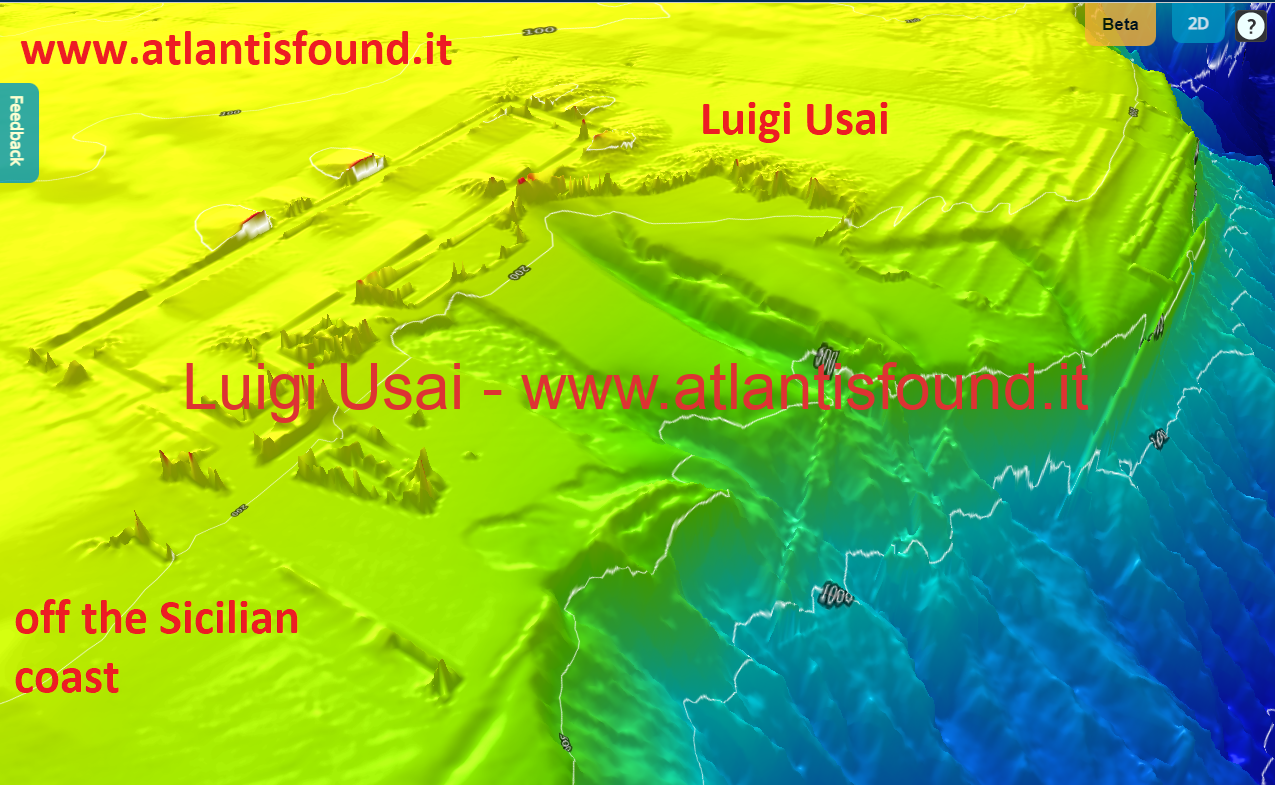
It is difficult to explain in a few words, I will do it in another context: the Sumerians, the Akkadians and the Babylonians , with very high probability, were Sardinian-Corsican-Atlantean migrations in times that scientists will now have to recalculate on the basis of the new discoveries. It will be difficult and wonderful, having to go over all the texts all over again and try to figure it out. However, I can give you some insights: there are probably links between the Sardinian surname Cadelanu , Candelanu and Kandalanu, a Neo-Babylonian king ; between the village of Sarroch in Sardinia and Dur- Sharrukinof Nineveh; these discoveries open the door to a new type of approach with the Sumerian and Mesopotamian culture in general.
Atlantis was bigger than Libya and Asia put together: now, by inverse procedure, we can deduce the size of these two geographical realities in about 9600 BC. The people who boldly advanced and wanted to conquer all the peoples who lived beyond the Pillars of Hercules, therefore, were the Sardinian Corsican Atlanteans who inhabited the Sardinian-Corsican geological block when it was still dry land, before the submersion in about 9600 BC. The whole of Sulcis (Sulcis is a geographical area of lower Sardinia, west of Cagliari) is very rich in Atlantean toponymy: Acquacadda ,Acquafredda (city that disappeared in the Middle Ages), Acquafredda Castle , S’Acqua Callenti de Susu , S’Acqua Callenti de Baxiu , Acqua Callentis (another fraction that means Hot Water ), over three thousand and two hundred Sardinian toponyms just by looking for the portion of the word ” funt” (“funti” or “fonti” means “source” in at least one of the Sardinian variants). It is possible to cross-check my statements with Google Maps and with the Sardinian database of regional toponyms, as well as in the ways you deem appropriate.
In fact, Plato narrates that the island of Atlantis was rich in water. And in fact the world famous Sardinian linguist Salvatore Dedola (a super genius that you absolutely have to study in depth, together with Bartolomeo Porcheddu, another extraordinary scholar ) shows that Sassari, Thatari (Sardinian name of Sassari) and Serramanna, to give just one example, mean “Rich in Waters”. Toponymy and onomastics confirm the Platonic myth. It will be necessary to open sectoral studies to bring new information to those collected and demonstrated so far, and it is necessary that they be done by professionals in the sector.
SARDINIAN Oddities CORSO ATLANTIDEE
Regarding the Gadirica area, it is possible that it was not the name of Gadir (Cádiz), but of a homonymous geographical area of the Sardinian-Corsican block, now submerged. Why would it have the same name as Gadir? For the same reason that Teulada in Sardinia has the equivalent Teulada in Spain ; Pula has a Pula in Dalmatia ; Aritzo in Sardinia corresponds to Aritzu in Spain ; Monastir in Sardinia corresponds to Monastir in Tunisia , Alguier (Alghero) corresponds to Algiers in Algeria , the fraction Su Vaticanu of Santadi corresponds to the Vatican in Rome , Pompu in Sardinia corresponds to Pompeii , Bari corresponds to Bari Sardo, and I could go on and on, but I risk boring you. For this reason, Gadir della Gadirica, in the Sardinian-Corsican geological block, would correspond with Gadir (ie Cadiz) .

PLATONIC MEASUREMENTS
Taking the longer diagonal that cuts the Sardinian-Corsican-Atlantean block, we obtain that it measures approximately 555 kilometres; this measure appears, calculated in stages, in the measures provided by Critias to describe the island. If we exclude “the band of mountains that fall directly on the sea” (i.e. the mountains now present in Corsica and the right side of Sardinia such as the Gennargentu), measuring the rectangular perimeter of the remaining territory currently semi-submerged, it is greater than 10,000 stadiums exactly as stated by Plato. It is therefore possible that the scientific community will carry out independent measurements to verify the veracity of these statements.
TIMEO IS NOT ONLY ABOUT ASTRONOMY, BUT ALSO ABOUT GEOLOGY
Summarizing for clarity: the priests of the city of Sais in Egypt were trying, in their own way, to explain to Solon a geological event of submersion of the Sardinian-Corsican geological block in the center of the Mediterranean, a sea which in 9600 BC was called the Atlantic Ocean or Sea Atlantic (it took its name from the island of Atlantis, the largest of all before it ended up semi-submerged). Atlantis was therefore also larger than Sicily, which now, after its sinking, turns out to be the largest island, and not Sardinia.
Therefore the period of the sinking would be approximately around 9600 BC, differently from the hypothesis of the Sardinian Nuragic Atlantis, which is clearly wrong also for the reasons listed elsewhere by Sardinian archaeologists .
Stratigraphic analyzes must descend into the ground to find the remains of about 11,600 years ago, in order to find the remains of the “capital” of Atlantis or its population, and it is also very clear why there are no bodies of the deceased Atlanteans in the Nuragic layers.
COLUMNS OF HERCULES IN THE CANAL OF SICILY: NEW ARCHAEOLOGICAL FINDINGS
Frau (2002), whom I sincerely thank for his extraordinary contributions to the discipline, places the Pillars of Hercules between Sicily and Tunisia . Indeed, there is a possibility that these have been found. In fact, the scientific community around the world is in the process of analyzing the very recent discovery of what appear to be structures of an anthropic nature located right in the Sicilian Channel, found through bathymetric analyzes of the European Union’s Emodnet System, in Birsa Bank and El Haouaria Bank , exactly between Sicily and Tunisia, and a short distance from Pantelleria. A second anomalous discovery from a bathymetric point of view was made, ofan apparently rectangular structure in the Sicily-Malta continental carbonate platform , flanked by the Sicily-Malta Continental Escarpment (Sicily-Malta Escarpment for geologists) .
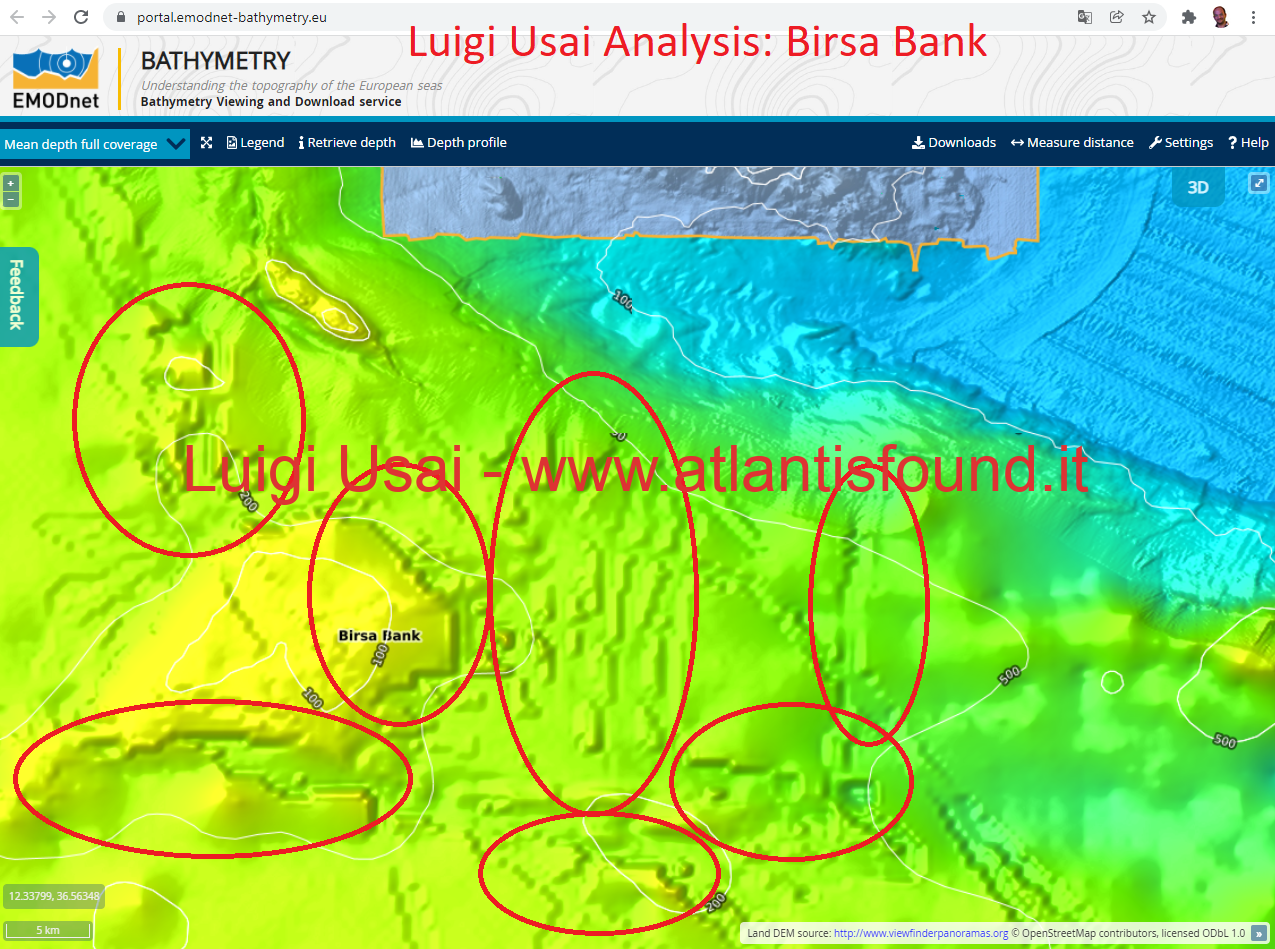
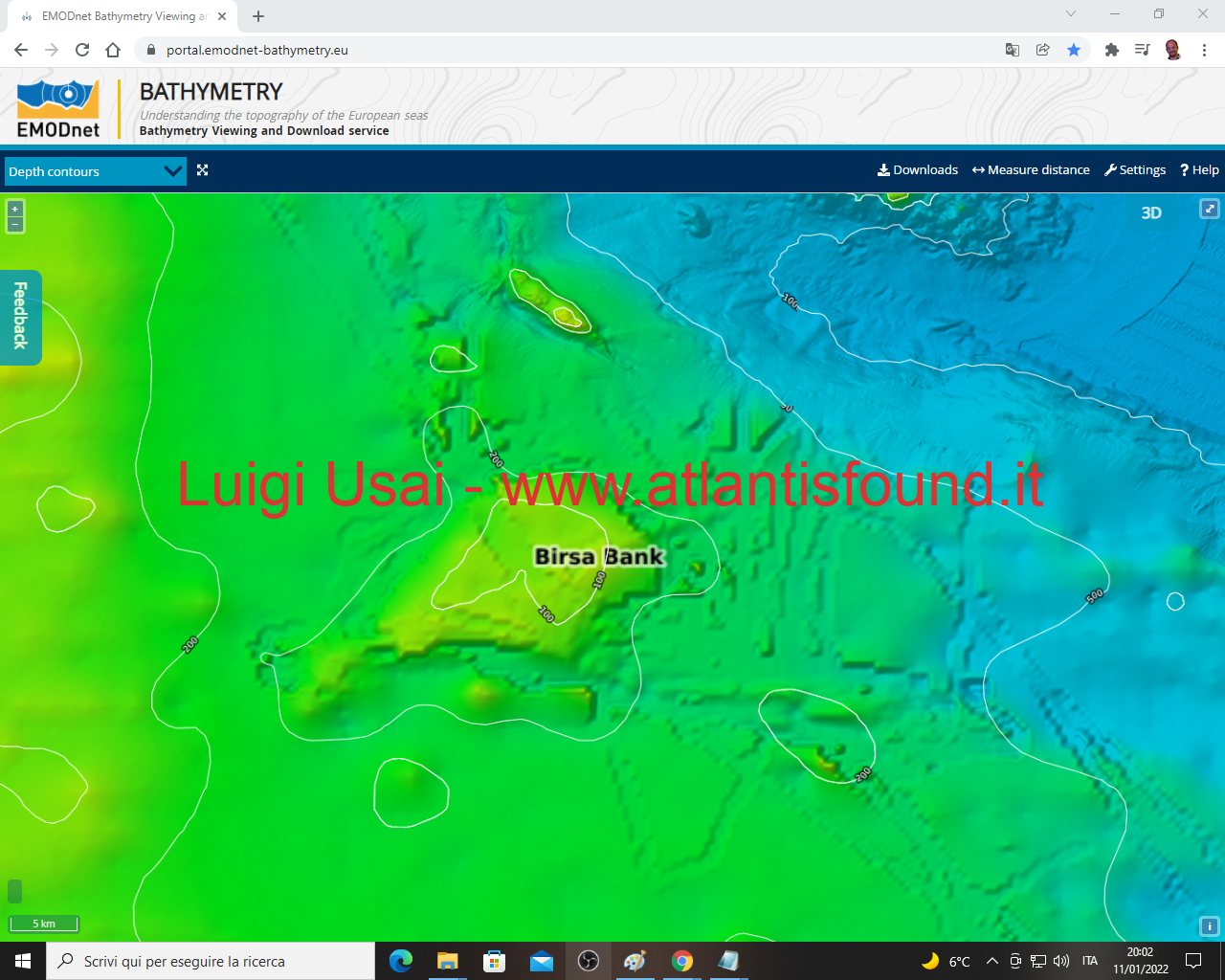
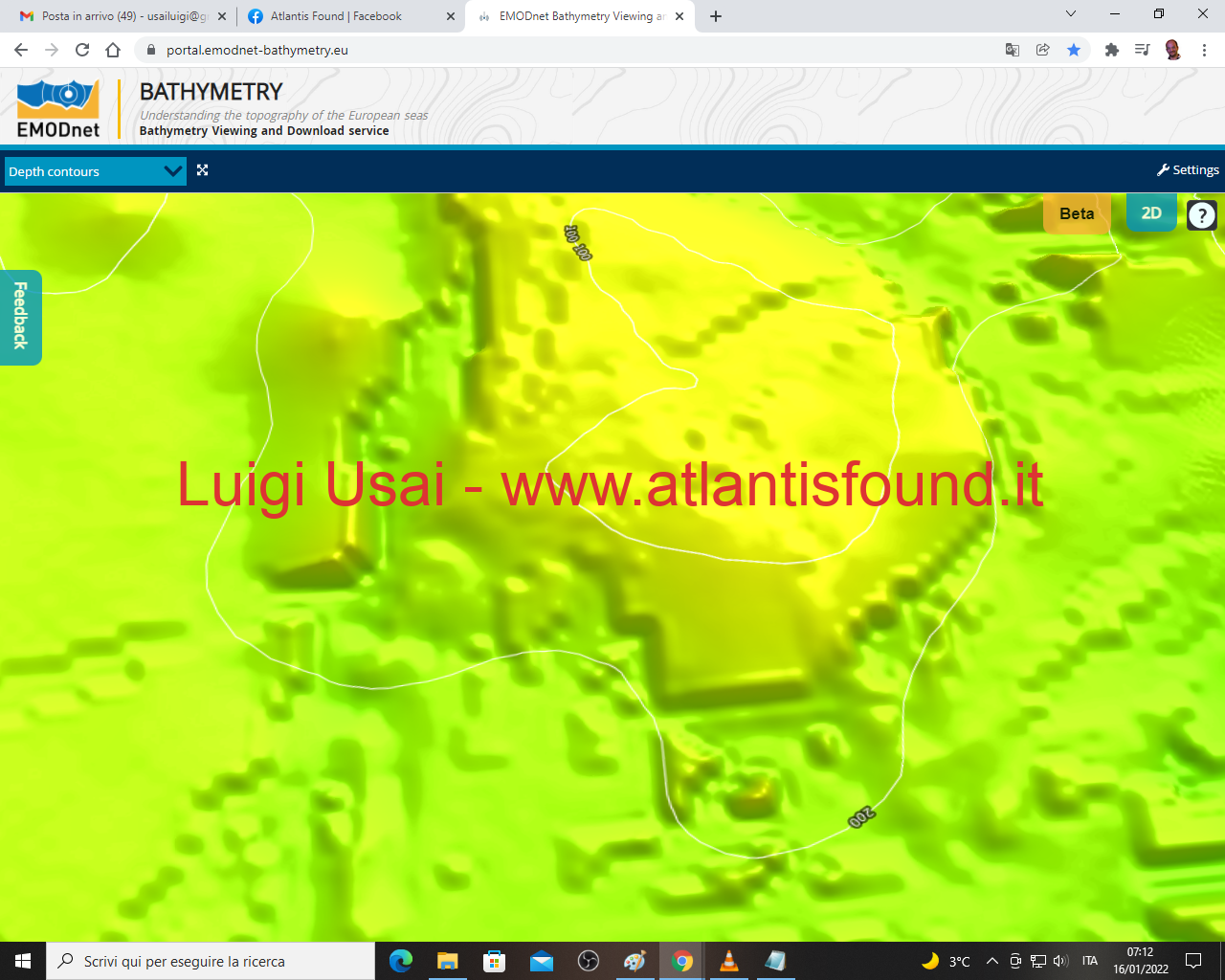
The scientific world has not yet expressed itself on the matter ; it is not even known whether studies are being carried out on this matter. 5 computerized and independent bathymetric systems were used, programmed and managed autonomously, which returned the same results, which suggests that these structures really exist on the seabed. The cost of a shipment, however, is prohibitive for a single individual, and it will be necessary to wait for the intervention of third parties.
THE MUD AROUND THE ISLAND OF ATLANTIS
Why then was all around the submerged Corsican Sardinian island full of mud that prevented navigation ? Because the sea currents, after the sinking of the Corsican Sardinian geological block, began to tear away layers of soil that emerged from the surface as Sardinia does now, creating over the millennia what geologists today call the Sardinian “continental platform”. run . As the sea currents “washed” away layers of soil, destroying all the inhabited centers and structures that had been built before 9600 BC on the Sardinian-Corsican coastal strips, the water was clouded by muddy materials, and this is clear and obvious to thought and reflection.
GENETICS
In Atlantis “there lived the oldest ones”, and we all know of the Corsican Sardinian centenarians , to the point that the Sardinian genetic code has not only been and is studied all over the world, but has even been stolen (see the theft of 25,000 test tubes with 17 suspects, following the theft of the DNA test tubes of the Sardinians which according to the press took place at the Genos Park of Perdasdefogu in August 2016). That the Sardinian-Corsican block is ancient for the ancients is obvious to educated scholars: just mention the discovery of a fragment of carapace of Arthropleura armata of the Carboniferous of Iglesias (PAS Museum – EA Martel of Carbonia) , but anyone interested can inquire at a paleontologist, above all the extraordinary Daniel Zoboli.It is therefore obvious that the learned Egyptians were able, from many details, to understand the antiquity of the Sardinian-Corsican block , which they called Atlantis .
ARCHAEOLOGICAL EVIDENCE
The Temple of Horus in Edfu, Egypt: reinterpretation of the texts based on the Sardinian-Corsican-Atlantean paradigm
In Egypt, in the city of Edfu , there is a temple entirely covered in hieroglyphs. There are various translations, difficult to make also because of the content: in fact, the majority of these texts tell of the origin of civilization, of the origin of the world .
The Sardinian-Corsican-Atlantean paradigm helps in deciphering these texts, helping to clarify the meaning of most of them; to understand better, however, it is necessary to provide the reader with some basic information which will then allow him to understand almost the entire text.
In the Temple of Edfu, the Mediterranean Sea is called “The Eternal Lake”, “The Eternal Lake” or “The primordial waters” . In the Eternal Lake there was an island that lay in the primordial waters, i.e. the Sardo-Corsican block when this was a single land above sea level, over 11,600 years ago, during the Pleistocene. This same island is called by Plato, in the dialogues entitled Timaeus and Critias, with the name of Atlantis. The historical account is the same, but a few different terms are used to describe the same things. By combining the texts of Timaeus and Critias with the information carved in the Temple of Edfu, it is possible to obtain further information useful for understanding the prehistoric past of the Sardinian-Corsican-Atlantean island and its relations with the ancient Egyptian world.
Edfu texts can be viewed at this address:
https://books.google.it/books?id=7sdRAQAAIAAJ&printsec=frontcover&hl=it#v=onepage&q=%22the%20island%20of%20creation%22&f=false
Since I didn’t know these texts, I will slowly begin to try to make them translatable by relying on all the information that has been provided to us by the Platonic texts and by new scientific discoveries of various kinds: archaeological, genetic, geographical, linguistic, etc.
For hieroglyphic writing analysis, I will make use of the typewriter available online here:
https://discoveringegypt.com/egyptian-hieroglyphic-writing/hieroglyphic-typewriter/
I will try to rewrite the Edfu texts trying to make them clearer for a contemporary citizen, replacing all the ancient terms with modern ones. For example, instead of “Lago Eterno” I will write “Mediterranean Sea”, instead of “Isola dell’Uovo” I will write “sardinian-Corso-Atlantean semi-submerged island”, and so on.
The primordial world of the Gods is an island (in hieroglyph iw) partly covered by reeds, which lay in the darkness of the primordial waters of the Mediterranean, occupied by Mesolithic inhabitants whose DNA was analyzed in two out of three individuals of the rock shelter of Su Carroppu, in present-day Sardinia.
This population was considered divine, the reason is not yet clear. Perhaps because they were culturally far ahead of the rest of the world’s population. They probably already knew some metallurgy in the Mesolithic (I still have to prove it) and this was perceived by other peoples as a divine characteristic. In fact, Nekhbet and other divinities have the symbol of metallurgy in their paws, which in my opinion is also the symbol that the Egyptians used to indicate the Sulcis or the origin from the mining Sulcis. Among the creator gods, Ptah seems to have a very important role. Now, it’s still unclear at the moment if this has anything to do with Poseidon. At present it is still difficult to understand, I am forced to study Egyptology to try to understand the possible connections. Some information can be found in the Stone of Shabaka. The creation texts are of the Heliopolitano or Hermopolitano type, from the respective cities where the texts were found engraved on the walls. The first Egyptian pharaohs were probably inhabitants of the Sardinian-Corsican block, i.e. of what for the Egyptians was the Primordial Island or Egg Island. In fact, the priest who speaks to Solon in Timaeus and Critias points out that at the beginning the Sardinian-Corsican Atlanteans had arrogantly attempted to invade the entire Mediterranean. Gobekli Tepe could be a Sardinian-Corsican Atlantean colony before the submersion. The partial submersion of the island and the death of millions of inhabitants, and the destruction of many cities and works of art must have been a tremendous trauma for the Sardinian settlers in Turkey.
The myth continues: first is Atum, the god who hovers over the waters; then the pyramid-shaped hill appears from which the sun originated, and Atum climbed it. Atum was bisexual; he cried, and the tears became men and women. He gave birth, and Geb, the earth, male and lying down, and Nut, a woman clinging to him, were born. Atum made them separate from the air, Shu.
Atum hovering over the waters, is then taken up by the bible: “And the spirit hovered over the waters”, in Genesis, before creation. Geb and Nut had children: Isis, Osiris, Seth and Nephthys.
This is the myth of Heliopolis.
The Hermopolitan Egyptian Creation instead provides that the sun was born from a mound. And indeed, around the world, there has been at least one civilization that has built a disproportionate amount of burial mounds. Even in the US. This should at least make you think. Now, in Sulcis there is a structure made in this way, but I don’t know if it’s just a coincidence.
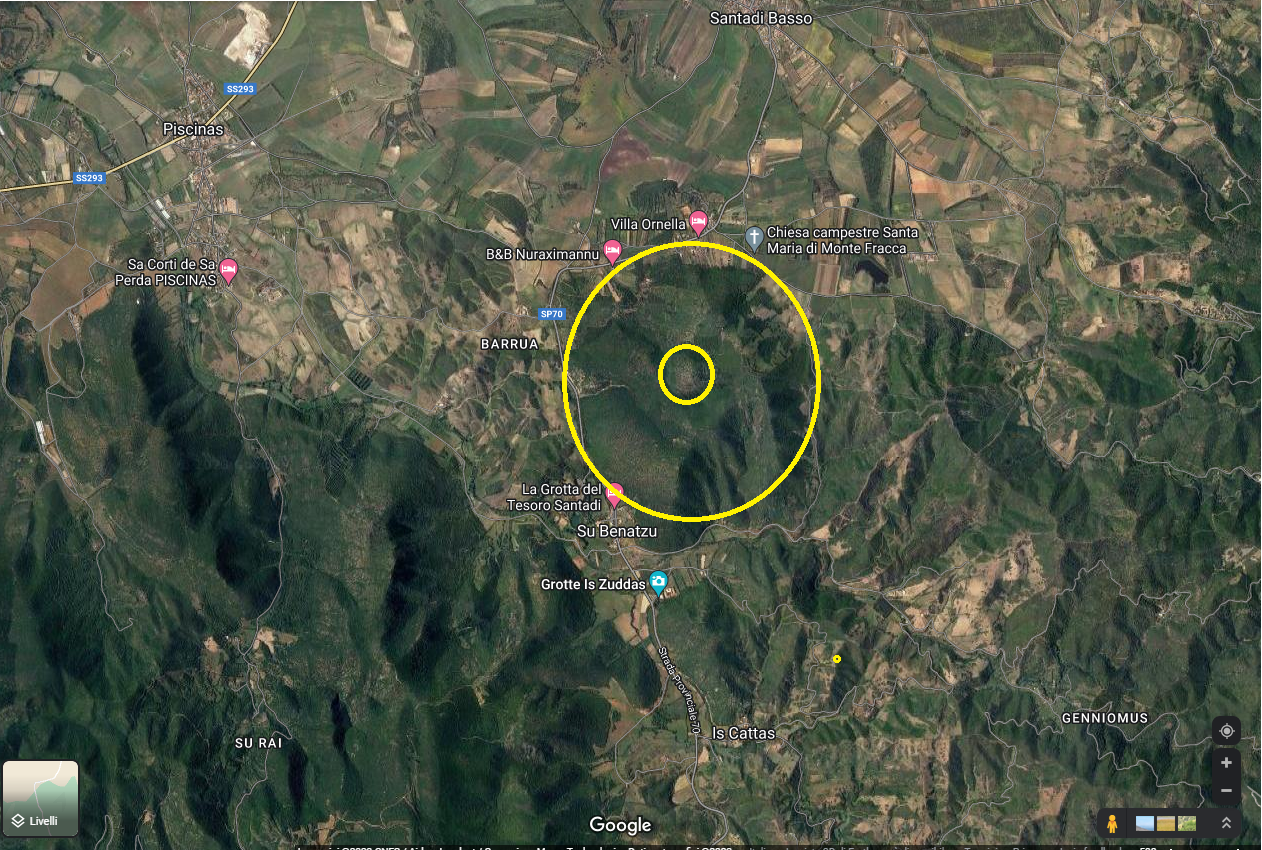
GEOGRAPHY
Plato affirms that from the Isle of Atlantis (which here proves to be the Corsican Sardinian block) it was possible to go to the surrounding islands and to what is truly the continent. This is perfectly true: from the Sardinian-Corsican block, when it was dry land, it is possible to go to the surrounding islands, and it is really located in the center of the Atlantic Ocean (the Mesolithic name for the Mediterranean).
We Sardinians on a linguistic level, fortunately, have still kept these ways of saying: ” Deppu andai in Continenti ” ( I have to go to the Continent), when we have to go to the Boot. This statement makes those who hear us Sardinians die laughing, but fortunately it helps us understand what Plato meant: linguistically, when the Sardinian-Corsican block was dry land, we Sardinians linguistically called the island “continent”. Leaving the island was “going to the continent, to another continent”. After the sinking, this linguistic use remained at the level of Sardinian dialects, so we say that “we are going to the continent”, astounding those who listen to us. Furthermore, the Sardinians call the Italians who live in the boot “The Continentals”, confirming what was written by Plato and said by the Egyptian high priest in Sais, Egypt, to Solon. Atlantologists (that is, scholars of Atlantis) up to now have interpreted the word “Continent” with the semantics currently in vogue; they have forgotten that in 9600 BC the word “continent” could have a semantic, pragmatic and semiotic different from the current one. So someone claims that America is a continent, and therefore America can be Atlantis. In my opinion these interpretations show the side to many criticisms, and appear very trivial in my eyes.
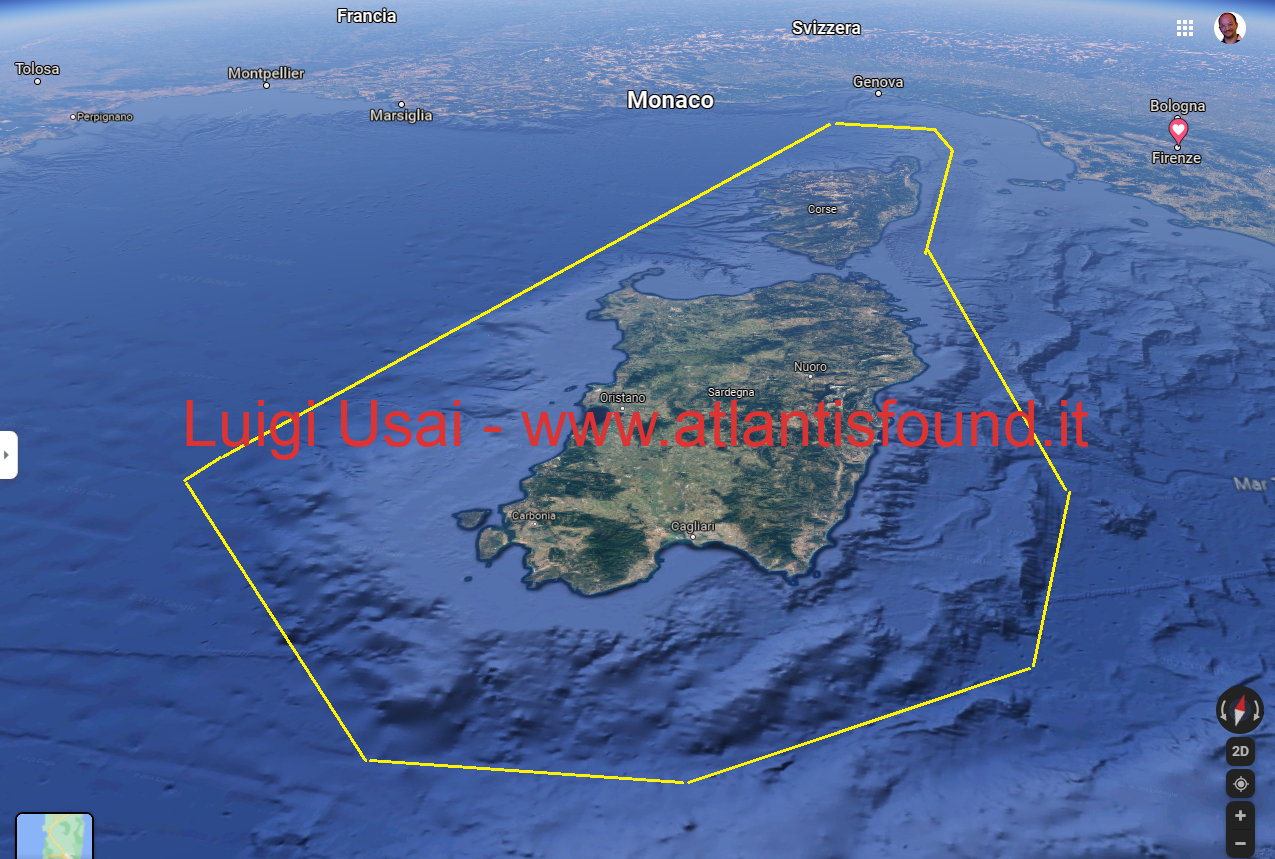
In short, all Platonic statements, if placed in the right context, are rational and explainable correctly. However, they require a certain mental humility, a certain “willingness to listen”. Since they are strong affirmations, which have consequences, they probably need a few months of reflection and meditation before they can be properly assimilated and digested. Incidentally, it’s been 2600 years (from the time of Solon) that no one understood what the island of Atlantis was, indeed, it was stated almost everywhere that Plato was exaggerating. With regards to the submersion/sinking of the Corsican Atlantean Sardinian island , this would be a geological problem, where I can only speculate. For example, there may be at least three concurrent causes: Meltwater Pulses, in particular the meltwater pulse 1b, also studied by NASA technicians. In addition, geological settlement movements due to what geological experts call ” slab roll-back “. Furthermore, it has even been hypothesized, but still being verified, that a tectonic fault passes under the Sulcis, the same one that passes under Pompeii and Herculaneum, arrives under the Sulcis and continues up to Gibraltar . In possible support of the thesis that Atlantis is the Sardinian-Corsican island partially submerged and its continental shelf currently submerged, we report here some scientific evidence. On February 28, 2017, a study was published in the journal Scientific Reports of the Nature group which presents new archaeogenetic data. These data reinforce the archaeological evidence of the clear cultural discontinuity between the first inhabitants of the island, dating back to about 11,000 years ago, and the architects of its definitive population which occurred about 3,000 years later, with the arrival of the first farmers-breeders. . This important discovery is based on the analysis of DNA extracted from the skeletal remains of two individuals buried in the prehistoric shelter of Su Carroppu di Sirri in Carbonia . At present, these remains represent the oldest evidence of human presence on the island. Now, from 9600 BC to today about 9600 + 2023 years have passed, i.e. 11623. The evidence cited above is precisely from 11000 years ago. A study was conducted on the clear cultural discontinuity between the first visitors to the island of Sardinia around 11,000 years ago and the architects of its stable and definitive population, which took place around 3,000 years later with the arrival of the first farmers-breeders. The study is based on the analysis of DNA extracted from the skeletal remains of two individuals buried in the prehistoric shelter of Su Carroppu di Sirri in Carbonia, which represent the oldest direct evidence of human presence on the island. The study is part of the research project funded by the Autonomous Region of Sardinia on the history of the first Neolithic population of the island. The genetic sequences obtained were compared with ancient and modern data and revealed a large difference in the genetic variability of the current population of the island compared to the first humans who frequented it, with most of the genetic variability appearing to have been determined by the migratory flow of populations who introduced the productive economy starting from the most ancient Neolithic. The Mesolithic sequences of the Su Carroppu samples belong to the groups named J2b1 and I3, which have very low or low frequencies in Europe. The relevance of the scientific discovery stimulated the intensification of research in the key site of Su Carroppu, already investigated between the years 1960-1970 and currently the subject of systematic excavations directed by the University of Cagliari. Happy searching to all of you. If anyone is interested, the theory of Atlantis as the Sardinian-Corsican island and all of its continental shelf currently submerged, can also explain other things in a very intuitive way. For example, the Greeks and Romans probably thought that the submersion of the Corsican Sardinian geological block had been a punishment from the gods for the arrogant inhabitants, who “overbearingly attempted, in one fell swoop, to invade the lands on this side of the Colonne D’ Hercules (perhaps located in the current Birsa Bank, an apparently anthropized seamount below the Strait of Sicily, data scientifically verified through Emodnet bathymetries). First I tried to clarify the toponymy. Now we can try to clarify the onomastics: the Gods punished the Sardinian-Corsicans, called by the Egyptians “Atlanteans”, according to what was stated in the Platonic texts around 9600 BC, “crushing the Sardinian-Corsican island underfoot, and it sank” (the quotation mark is my hypothesis). And this is easily explained why the Greeks called Sardinia Ichnusa (footprint) and the Romans called it Sandalia (sandal imprint). Even the name is now very clear: they were Greeks and Romans who mocked Sardinia, which was what remained of the great Sardinian-Corsican power, which the Egyptians called “Atlantis” in the story given to Solon, who told it to Dropides, who spoke of it to grandpa Critias, who told him to grandson Critias, who told Socrates in the Platonic dialogues of Timaeus and Critias. If any reader wants to know the original history of the Corsican Sardinian geological block, before it sank around 9600 BC, he is obliged to read Timaeus and Critias, two texts written by the Greek Plato. All the rest of the texts published to date have done nothing but add entropy, chaos, confusion to the history of the Sardinian-Corsican block, as characters like Cayce or Madame Blavatsky, professional charlatans, used the Atlantis argument to money, publishing books full of lies and entertaining the curious, especially after they saw that Ignatius Donnelly’s book, entitled ATLANTIS: THE ANTEDILUVIAN WORLD, had had an incredible worldwide media coverage. Furthermore, cinema and television have introduced a lot of nonsense on the subject of Atlantis, so when we talk about this topic many have in mind pieces of films or cartoons or fantasy books that have nothing to do with it. what Plato said. Hence: the Greek name Ichnusa, and Latin Sandalia, confirm my hypothesis that the ancients thought that the gods punished the Sardinian-Corsican island by crushing it underfoot. There was still no geological science as we understand it today. Furthermore:the Wadati-Benioff tectonic fault that passes under Pompeii and Herculaneum, and which destroyed them, is probably the same that continues as far as the Sulcis in present-day Sardinia and continues until it reaches the current Strait of Gibraltar. Since this fault is activated in geological times, the citizens who live in the Sulcis are not aware of the seismic activity. When this releases its elastic energy, frightening disasters occur, such as the opening of the Strait of Gibraltar, the destruction of cities and places such as Pompeii and Herculaneum, or the submersion of the Sardo-Corsa island. But the submersion is probably also due to another very important cause: the geological settlement of the Sardinian-Corsican island following the “slab roll-back” which, as revealed to us by the ancient Egyptian priest, took place around 9600 BC. The Slab Roll-Back, concomitantly with the tectonic awakening of the fault present under the Sulcis and currently unknown to the official geology which instead knows a fault further south along Africa, and perhaps also due to the succession of various Meltwater Pulses after the Wurm glaciation, they caused the partial submersion of the Sardo Corsa island. Now,out of the water, only the tops of the mountains remained, which we now believe are separate islands, and which by now our civilization knows by the names of Sardinia and Corsica. Furthermore, all the toponymy and onomastics present in Sulcis leave one question: why do all these Sulcis places recall Plato’s story? We will then be able to pick up the Platonic text again to try to understand why. First of all, if the Pillars of Hercules were located at Birsa Bank, and the Sardinian-Corsican island and its currently submerged continental shelf is really Atlantis, this means that in 9600 BC it was customary to call the current Mediterranean Sea with the name of Sea Atlantic (i.e. sea of the island of Atlantis) or Atlantic Ocean (Ocean of the currently submerged Sardinian-Corsican island, i.e. Atlantis). I haven’t read Frau (2002) yet, so I don’t know if he has already published some of my statements, in which case I apologize in advance. Mine are only reflections resulting from the reasoning made in the last two years. Please let me know of any shortcomings or apparent plagiarism, thanks in advance. If all of this is true, then Poseidon was perhaps a man, and obviously not a deity (why, have you ever met one in person?), and this man fell in love with a teenage girl whose parents had died, Clito. The Platonic account states that Poseidon surrounded the hill with water channels. Now, just the Sulcis (but look what a coincidence! Or maybe it’s not a coincidence?) is volcanic in nature, so right in the center of the Sulcis there is a hill or mountain, if you like, not too high, and this is visible using satellite systems such as Google Maps or Google Earth, which even allows you to tilt the view by pressing the shift key on the computer keyboard. But are these places really ancient as Plato says or are they very recent places? Easy to verify: right in the center of Sulcis, you can verify that there are prehistoric IS ZUDDAS caves, and nearby there is ACQUACADDA (Poseidon put two sources there, one of cold water and one of hot water, and the locality is called Acquacadda …but look what an incredible coincidence!Of course I have imagination!) and very ancient archaeological finds have been found in the locality of Acquacadda. Now an expert might argue that the finds, for example, are only 6,000 years old. Note: an expert should look for the stratigraphic layers of 9600 BC: only then would it be possible to obtain more detailed information. Instead, currently, in these places groups of children are brought to watch. In my opinion this is dangerous but I’m not a stratigraphy specialist so I have no say in the matter. Also in Sulcis, the Su Benatzu cave was found, which is an authentic archaeological treasure, which could contribute to research on the topic “what happened in the millennia after the sinking of the Sardinian-Corso-Atlantean island?” (I have to develop this topic). Furthermore, in support of the theory of the submerged Sardinian-Corsa Atlantis, there is another scientific discovery of marine archeology: the discovery of a load of 39 ingots of orichalcum by the extraordinary Sebastiano Tusa off the coast of Gela, in Sicily. Newspaper articles speculate that they came from Greece or Asia Minor, but now that we have all this information about the submerged Sardinian-Corsican island, we can assume that they came from this now submerged island, which is located a very short distance away, which makes the hypothesis very plausible. The antiquity of the semi-submerged Sardinian Corsican geological block is known to official science, and in particular also to geology, which is aware of the so-called “rotation of the Sardinian-Corsican block” which began about 40 million years ago, after the detachment of the from the present coast of Spain and France, and lasted about 15 million years (take the dates with a grain of salt, I wouldn’t be surprised if they turn out to be incorrect in the future). This is possible to know, as stated by the well-known geologist Mario Tozzi, because a great deal of research has been done in the paleomagnetic field, which showed how the only way to explain the geomagnetic orientation of the Sardinian-Corsican stone and geological structures is to bring it back to coincide with the current Hispanic-French coasts. Furthermore, the fact that the geological structure of Sardinia has various types of Graben Horst may have also contributed to the possible submersion, so that these geological adjustments may also have contributed to important and significant telluric displacements for the Sardinian-Corso-Atlanteans people who lived there. For example, the Campidano plain in Sardinia is a Graben Horst. The antiquity of the Sardinian-Corsican geological block is clear to geologists from all over the world as there are even “graptolites”, to which the Sapiens program by the extraordinary geologist Mario Tozzi has dedicated videos (see: “Goni’s Graptolites at Sapiens”). Now, if Atlantis is really the submerged Sardinian-Corsican block, then we have to verify again what Plato said. Atlantis dominated the Mediterranean also over Libya and Tyrrhenia, and over many islands scattered on the Ocean (let us remember that we have already shown that Ocean, in the texts of 9600 BC cited by the Egyptians, is the Sea of Corsica and Sardinia, and not the current Atlantic Ocean). But if it is true that it dominated, then perhaps there were linguistic influences as well? Of course, and the evidence already exists: many scholars have noticed the incredible similarities between Sardinian dialects and languages and the Corsican language, Sicilian “dialect” (or should we say the language?) (Minimum Dictionary. Sardinian Corso Siciliano. Correspondenze nel Gallurese, by Emilio Aresu and others),mainstream as no one imagined the enormous importance of this type of work, which shows to all intents and purposes that the Sardinian-Corsican-Atlantean languages have spread throughout the Mediterranean. And now, thinking about it, we can begin to understand that even in the study of languages there has been an inversion: it was believed that Sardinian resembles Spanish and Portuguese because we have been “dominated” by them in recent history, while probably the Spanish and Portuguese languages, in reverse, were imposed by the prehistoric Sardinian-Corsican-Atlantean dominion of which, until now, we were not aware. New Sardinia has dedicated an article about it entitled: «That thread that binds Sardinians to Basques» by Paolo Curreli in which an exceptional and ingenious linguist became aware of this Sardinian Corsican Atlantean linguistic heritage, and made it known to the world with his extraordinary works (from the article: “Hundreds of similar words in the study of Elexpuru Arregi. Many linguistic affinities . Two towns with the same names: Aritzo and Aritzu. But also Uri and Aristanus. The holly in Sardinian, galostiu, in Basque is gorostoi”). But Atlantidologists cannot arrive at these texts if no one shows their correlation with the theme of Atlantis. There is therefore still a lot of work to do, and this is just the beginning of a new era of studies. The peoples of the Corsican Sardinian block therefore influenced in prehistoric times the evolution of the current languages and dialects and minority languages of part of the Mediterranean and perhaps also of other places. Here is now explained in a very simple and crystalline way why the Sardinian, the Corsican, the Sicilian, the Basque, the Spanish, the Portuguese, the Veronese dialect (see for example all the names of asparagus, vegetables, etc. which are identical to those Sardinians) and who knows which others are so similar. Now that we have this information, we can resume the overtime work of theProfessor Bartolomeo Porcheddu and confront your statements, which are now all perfectly correct and all not only explainable, but even understandable and obvious to reason. What Professor Bartolomeo Porcheddu says is right and correct (in my eyes it is obvious, there is not even need to underline it, but in the interviews we sometimes get the impression that your theses are considered “fringe theories”, as if they were pseudo -science, while instead they are a demonstration of genius and intuition out of the ordinary). There are various sites that show how by now various scholars were already realizing the linguistic similarities between languages and dialects of the Sardinian-Corsican geological block and other languages and dialects scattered around the Mediterranean in particular, see also this article. Yet another article that talks about it is this one. In short, by now serious scholars were realizing that there was information we were not aware of, as if there really was an ancient civilization that was missing from the appeal of Ancient History, as Graham Hancock states: this civilization is the one that lived in the Corsican geological block currently semi-submerged, when this was an island and dry land: Graham Hancock was therefore right on this point. The impact of this extraordinary discovery creates a sort of shock in the scholar’s mind: in fact, now there is a sense of dephasing, of distrust. How is it possible that hardly anyone had ever noticed, if we exclude some brilliant scholars who have even been laughed at for their statements? How is it possible that Plato was not believed? Even Aristotle himself did not believe him: “He who dreamed of Atlantis also made it disappear”. In conclusion: the old Egyptian priest was telling Solon, around 590 BC, that the Greeks are a young people, as the men of letters cyclically died from the catastrophes that periodically occur on the planet, and therefore their opinions on the past were like fairy tales, because they had not fixed historical events in written language. The Egyptians, on the other hand, fixed information on stone, so they had memories of facts that had faded over time. And he doesn’t immediately tell him about Atlantis, he tells him about the first Athens, founded in about 9600 BC, that is 1000 years before the city of Sais in Egypt. At that time, the Greeks accomplished a most extraordinary feat of all: they managed to free all the peoples of the Mediterranean from the invasion of one people,
There are other discoveries to support the Sardinian Corsican Atlantis thesis, but searching for the material takes time and sacrifice. I will do my best to provide as much evidence as possible to all of you readers, archaeologists, journalists and scientists. It is important that all possible evidence is presented in order to be able to show you that these are not mere coincidences. A coincidence would be normal. Four as well. But when we bring 40+ coincidences to support, then maybe it’s not coincidences but potential evidence.
Prof. Sergio Frau (2002) realized that “ Sardinia is Atlantis“, while in reality it is a plateau of the Corsican Atlantean Sardinian geological block, and has therefore tried to make the Island of Atlas collimate with Sardinia. The problem is that Sardinia is only a subset of Atlantis, therefore the whole Sardo-Corsican continental shelf was missing, which is currently submerged as the Platonic story of Timaeus and Critias says, and the mountainous area north of the island of Atlantis was missing, the emerged part of which is now called “Corsica”. Furthermore, Corsica was ceded to France, terribly complicating the search even more: in fact, human beings mentally, seeing that one part is Italian and one French, instinctively think that they are two different realities, while instead they are the same submerged island , as world-renowned geologists have already confirmed to me that they know. But geologists call this submerged island millennia ago with the name of “Sardinian Corsican geological block”, while the Egyptian priest who told Solon could not use the terms “Sardinia” and “Corsica” which did not yet exist. Then the archaeologists, using the scientific method, verified Frau’s claims, and they realized that scientifically the accounts did not add up, and they are right. In reality, both Frau and the archaeologists were right: Frau was right, as Sardinia is a subset of the Corsican Atlantean Sardinian island. The archaeologists were right, as Sardinia is too small in size to be Atlantis. Furthermore, the nuragic dating was unfortunately not correct, so it was rightly observed by our scientists. Perhaps what leaves us perplexed is the fact that Atlantis is a submerged island, so: why were the submerged bathymetries never shown during hundreds of encounters? Why haven’t bathymetry experts been summoned? This will likely remain a mystery for years to come. With this message I want to underline my profound esteem for all the scholars, archaeologists, geologists, researchers, journalists such as Sergio Frau and Graham Hancock, who have contributed to the worldwide search for truth. You all have my praise and my respect. Thank you for the work you have done and still do. World scientific research can only progress if every single citizen can give his contribution, even when he says nonsense: because a mistake in research doesn’t kill anyone, as long as the research then continues. And the important thing is that we stop tearing each other apart between scientists and researchers: our aim can be the serene search for truth, with serene dialogue. It is not serious if a citizen mistranslates the original Greek text. “We mustn’t hit him for this”: let’s try to focus on dialogue, discussion, and let’s stop waging war between factions of thought. “I don’t agree with what you say but I would give my life for you to say it” (phrase not by Voltaire, but by Evelyn Beatrice Hall). I await the response of the researchers to my statements on the currently semi-submerged Sardinian Corsican Atlantis.
If you really want to understand Atlantis: study the geology of the submerged Corsican Sardinian block. Studying the Sardinian dwarf elephants found in Sardinia, called Mammuthus Lamarmorae. When Plato writes that “the species of elephants was present” he is talking about this animal, not the Indian elephants. To understand Atlantis it is necessary to know the toponymy of Sulcis: “Poseidon put two springs there, one of cold water and one of hot water”. In fact, the Corsican Atlantean Sardinians called the towns of Sulcis with the following names: Acquafredda (which disappeared in the Middle Ages, but a Castle of Acquafredda remained in Siliqua), Acquacadda, S’acqua callenti de Susu, S’acqua callenti de Baxiu, Piscinas (perhaps following the submersion of the Sardinian-Corsican geological block), the source of Zinnigas still exists, Upper Is Sais and Lower Is Sais (which probably gave their name to the city of Sais in Egypt where they told Solon of Atlantis). The Atlantean DNA has already been found and studied by Professor Carlo Lugliè, who has already SCIENTIFICALLY established that this population has a different DNA from that of the Neolithic people who populated Sardinia 3000 three thousand years later. Certain! If there was a catastrophe with the sinking of the Corsican Sardinian geological block, it is obvious that they died and a population with different DNA came later. In Sulcis Poseidon obviously loved caves. There were the caves of IS Zuddas and Acquacadda (here the theme of hot and cold water returns and therefore of the sources). But when he moved north, he probably went to the caves of Alghero, which the Romans still knew as Neptune’s Caves. But Neptune is the Latin name of Poseidon! So the caves of Neptune are the transfer location of this ancient ruler when he went to the north, probably to visit his sons. Until today, Poseidon / Neptune was thought to be a myth / legend, but he was a very ancient ruler, later deified. This fact is called “EVEMERISM”. I suggest to all readers that you take a look, to learn new things. If what I say is true, can I prove it somehow? If a person is intelligent he can deduce it in the following way. The Mammuthus Lamarmorae have so far been found in at least 3 locations: Funtanammari in Gonnesa, in Alghero where there is Neptune’s cave, and if I am not mistaken in the Sinis. In Alghero we have just said that there are the Grottoes of Neptune, therefore Poseidon used to go there, and they found the dwarf Sardinian mammoth. If you analyze the toponymy of Gonnesa, they found another dwarf mammoth of the elephant species in Funtanamari, which means “Fountain by the sea”. But the fountain is a source of water! Here is the theme of the island rich in water sources. Now, the Egyptian priest told Solon, around 590 BC, a lot of things, but archaeologists can’t go so far as to claim that the priest also taught him the Sardinian-Corsican language and the various Atlantean dialects. All those that I list are not coincidences: Atlantis is really the Sardinian Corsican block currently half-submerged. Probably scholars, now, pretending to believe the things I say, will gradually begin to realize that I am right and that I am not lying. they found another dwarf mammoth of the elephant species in Funtanamari, which means “Fountain by the sea”. But the fountain is a source of water! Here is the theme of the island rich in water sources. Now, the Egyptian priest told Solon, around 590 BC, a lot of things, but archaeologists can’t go so far as to claim that the priest also taught him the Sardinian-Corsican language and the various Atlantean dialects. All those that I list are not coincidences: Atlantis is really the Sardinian Corsican block currently half-submerged. Probably scholars, now, pretending to believe the things I say, will gradually begin to realize that I am right and that I am not lying. they found another dwarf mammoth of the elephant species in Funtanamari, which means “Fountain by the sea”. But the fountain is a source of water! Here is the theme of the island rich in water sources. Now, the Egyptian priest told Solon, around 590 BC, a lot of things, but archaeologists can’t go so far as to claim that the priest also taught him the Sardinian-Corsican language and the various Atlantean dialects. All those that I list are not coincidences: Atlantis is really the Sardinian Corsican block currently half-submerged. Probably scholars, now, pretending to believe the things I say, will gradually begin to realize that I am right and that I am not lying. Here is the theme of the island rich in water sources. Now, the Egyptian priest told Solon, around 590 BC, a lot of things, but archaeologists can’t go so far as to claim that the priest also taught him the Sardinian-Corsican language and the various Atlantean dialects. All those that I list are not coincidences: Atlantis is really the Sardinian Corsican block currently half-submerged. Probably scholars, now, pretending to believe the things I say, will gradually begin to realize that I am right and that I am not lying. Here is the theme of the island rich in water sources. Now, the Egyptian priest told Solon, around 590 BC, a lot of things, but archaeologists can’t go so far as to claim that the priest also taught him the Sardinian-Corsican language and the various Atlantean dialects. All those that I list are not coincidences: Atlantis is really the Sardinian Corsican block currently half-submerged. Probably scholars, now, pretending to believe the things I say, will gradually begin to realize that I am right and that I am not lying. Atlantis is indeed the currently half-submerged Corsican Sardinian block. Probably scholars, now, pretending to believe the things I say, will gradually begin to realize that I am right and that I am not lying. Atlantis is indeed the currently half-submerged Corsican Sardinian block. Probably scholars, now, pretending to believe the things I say, will gradually begin to realize that I am right and that I am not lying.
If Atlantis is really the semi-submerged Sardinian-Corsican block, then some parts of prehistory and history will have to be rewritten from scratch. I leave this work to you. I’m not capable of it. For me it has already been a superhuman effort to be able to put order in the midst of all this mess. I don’t care about fame. In my opinion, Professor Ugas came close when speaking of the Atlantic coast of Africa, but in my opinion, to better understand it, he could re-examine the text by Marco Ciardi, when he speaks of Bailly (Ciardi M., Atlantis A scientific controversy from Colombo to Darwin, Carocci editore, Rome, 1st edition, November 2002, p.92-97): in practice a part of the Atlantean colony colonized the area indicated by Prof. Ugas, while Poseidon became the ruler of the now submerged Sardo-Corsican island. Attention! It is important to note that the currently submerged Sardinian-Corsican continental shelf is immense in size! That was an integral part of the island. 11,000 years of erosion by sea currents generated the mud that surrounded the island in the Platonic story, and this mud, settling, cleaned the waters of present-day Sardinia making them crystalline. Furthermore, there is a very small desert in Sulcis. This desert is most likely artificial. Further studies will be needed to prove it, now I am unable to provide you with any other evidence. he cleaned the waters of what is now Sardinia making them crystal clear. Furthermore, there is a very small desert in Sulcis. This desert is most likely artificial. Further studies will be needed to prove it, now I am unable to provide you with any other evidence. he cleaned the waters of what is now Sardinia making them crystal clear. Furthermore, there is a very small desert in Sulcis. This desert is most likely artificial. Further studies will be needed to prove it, now I am unable to provide you with any other evidence.
I hope these posts of mine are interesting. If not, delete everything and leave it alone. I hope that out of hundreds of people, there are at least one or two who understand the importance of what I am doing.
I apologize if I have moments of anger: I am furious at the fact that the scientific world continues to insist on telling lies to listeners. It is not right that scientists and scholars spread lies. It’s unfair. It is unfair that a Sardinian/Corsica bathymetry expert has not been called. It is unfair that Prof. Carlo Lugliè was not called to question him on the truthfulness of what I said. It is unfair that no one EVEN NAMED the elephant species Mammuthus Lamarmorae. If you’ve never seen it, go to the Iglesias museum. But next time please talk about it.
For me it is a moral duty to make this information public.
For at least 2600 years no one has understood that the Timaeus is not only a text of astronomy, but also of geology, given that it deals with the geological sinking of the Sardinian Corsican Atlantean block.
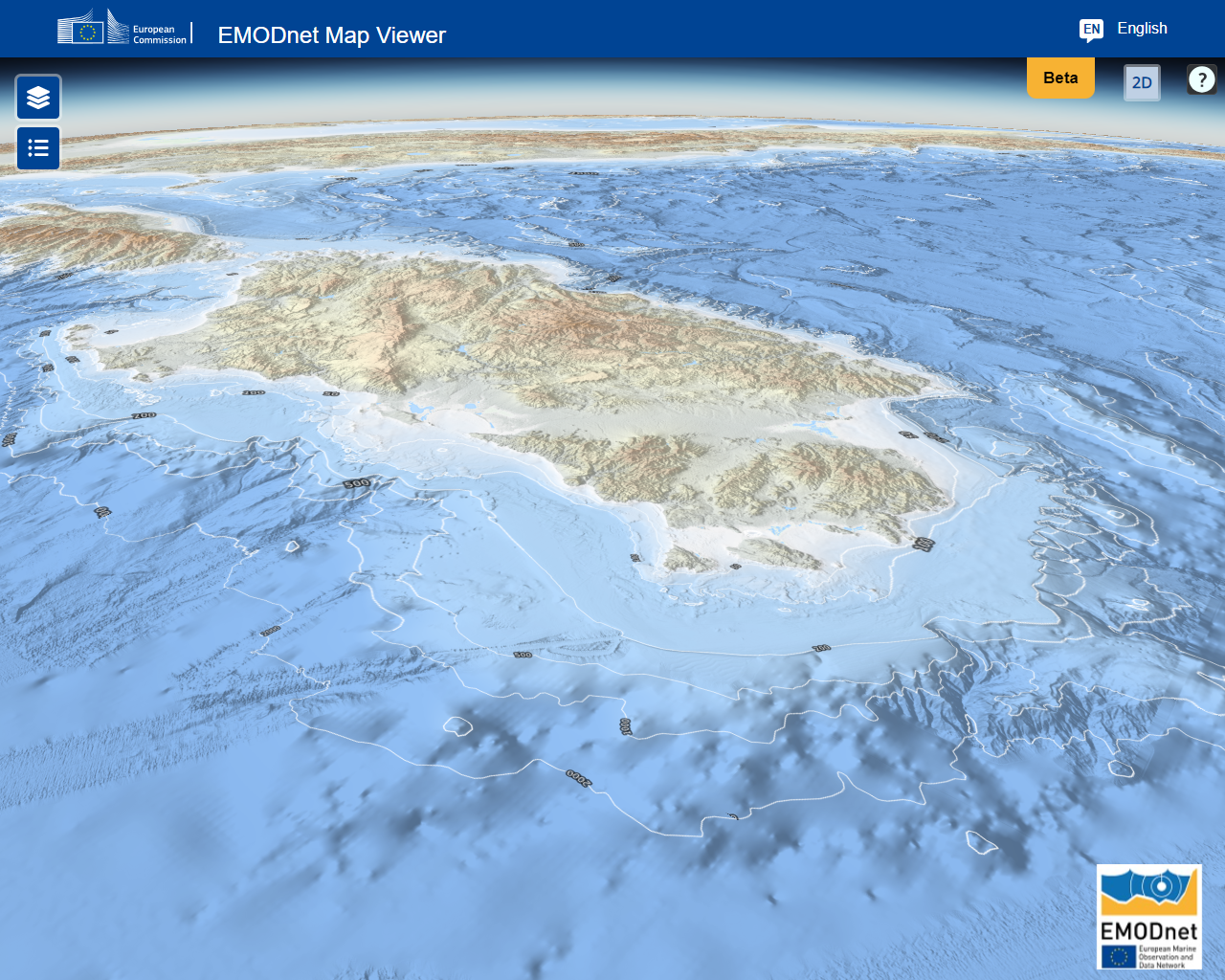
For archaeologists : a paradigm shift is taking place , as explained in the book by Thomas Kuhn, The structure of scientific revolutions, how ideas of science change, Einaudi, Turin, 1969: I called it ” The Sardinian Corsican Atlantean paradigm”. Before, everyone believed that orbits were circular, following Aristotle as You follow Lilliu (in the style of “Ipse Dixit”, “Lilliu dixit”). Then they realized, after an infinite number of tests after tests, that the orbits are elliptical. Then another paradigm shift occurred: the Bible said that the earth was at the center of the Universe, and Copernicus said that the Sun was in the focus of its elliptical orbit. Galileo confirmed this, and they showed him the instruments of torture, which I hope you will not show me. But Bruno was burned alive, poor fellow. Now I ask you: give me the benefit of the doubt and cross-check my claims, please. It may take a long time, but you will understand that we are once again facing something extraordinary: a new paradigm shift. The island of Atlantis is the Egyptian name for the currently semi-submerged Sardinian-Corsican geological block, whose two plateaus emerging out of the water are now known by the names of Sardinia and Corsica. Prof. Carlo Lugliè can help you by explaining that the original Atlantean population, around 11,000 years ago, had a different DNA from the Neolithic people who populated it 3,000 years after the catastrophe, and lived above all by procuring marine resources, and for this reason, the Atlantean settlements they were located mainly on the coasts. It is for this reason that civilization has been almost totally wiped out: because they lived on the coasts and these were submerged “in the short span of a day and a night of terrible earthquakes and floods”. Today science calls the Atlantean paleocoasts with the name of “Sardinian-Corsican continental shelf”. Furthermore, there have been 11,000 years of sea currents eroding and destroying coastal structures. Perhaps it is impossible to still find the remains of this civilization. Furthermore, the Andreotti Government has allowed the United States to set up a nuclear submarine base at La Maddalena, so the Americans had at least half a century to make their raids with submarines in our waters, before the Superintendencies woke up and understood what was happening. And since the Americans are clever, they have set up a “military base” right in Teulada, in Sulcis. But look, what a coincidence… Fantarcheology? Dear Superintendencies, where are your submarines for coastal exploration? Where are your thousands of reports on the Sardinian seabed? Where are the 3D bathymetries of the seabed? Or maybe nobody made them? And where are the letters to the Ministers, asking to obtain these things? To obtain funding by explaining its immense importance for the history of human civilization? If Corsican Sardinian Atlantis sank around 9600 BC, why are you wasting your breath and energy looking for Atlantis in the Nuragic layers? Once the existence of Atlantis with Sulcis as its capital is taken for granted, one has a precise idea of where to look for the structures described by Plato. to ask to get these things? To obtain funding by explaining its immense importance for the history of human civilization? If Corsican Sardinian Atlantis sank around 9600 BC, why are you wasting your breath and energy looking for Atlantis in the Nuragic layers? Once the existence of Atlantis with Sulcis as its capital is taken for granted, one has a precise idea of where to look for the structures described by Plato. to ask to get these things? To obtain funding by explaining its immense importance for the history of human civilization? If Corsican Sardinian Atlantis sank around 9600 BC, why are you wasting your breath and energy looking for Atlantis in the Nuragic layers? Once the existence of Atlantis with Sulcis as its capital is taken for granted, one has a precise idea of where to look for the structures described by Plato. https://www.atlantisfound.it/wp-content/uploads/2023/02/Capitale-di-Atlantide-Luigi-Usai-17-febbraio-2023-pulita.png Prof. Ugas can confirm that the dimensions coincide perfectly with what Plato said, also the distance of the capital from the sea, about 8.8 kilometers. Perhaps the problem is that the structures could also be 100 meters underground, because at first glance it seems that they have been submerged by mountains of earth (this needs to be verified, but it is understandable to the eye). Salvatore Dedola is a genius: he noticed the incredible overlap between Sardinian and Babylonian, Sumerian and Akkadian names. “There was a Paleo-Neolithic linguistic coenosis”. It is all right! The linguistic coenosis was caused by the Atlantean people of the Sardinian coast, i.e. the same inhabitants whose DNA has already been analyzed in two individuals out of three of the rock shelter of Su Carroppu. The Sardo-Corsican Atlanteans migrated to the Mediterranean. And these migrations would explain the Cretan civilization which worshiped the bull, which had the Labrys, it would explain the highly evolved culture and the engraving of Poseidon’s trident found on the Palace of Knossos; and it would explain why the Sardinian ingots are found in Crete, in Cyprus, and why there is Akrotiri in Cyprus and there is a second Akrotiri in Santorini, where an evolved civilization lived that even had toilets and pipes… It would explain why on Mount Carmel they then found structures from the Nuragic era. It would explain why Atlit-Yam, Pavlopetri, Herakleion/Thonis, Baia and who knows how many others that you haven’t even found yet… And it would also explain why Atlit-Yam had that name, since perhaps Atlantis was the mother island from which they had migrated…Since Atlantis had laws (the orichalcum column engraved with the laws, on the top of which they poured bull’s blood? Sound familiar?), is it not surprising that the descendants then created the Code of Hammurabi, strengthened by the legal knowledge developed in the previous millennia on the Sardinian-Corsican-Atlantean geological block. Give me the benefit of the doubt for just a moment. The Romans sought the Damnatio Memoriae for Atlantis. They subdued them, perhaps stripped the Neptune Caves of the little material that perhaps still remained, but they continued to call them by their name. In short, they knew Poseidon/Neptune, for them he was still a historical figure. At this point it wouldn’t surprise me if names related to Atlantis had been banned, and maybe Atlas has become Antas, which could clarify the toponym S’Antadi. I haven’t been able to research this and I’m absolutely not capable of it. and S’Antadi also appears in Sant’Antonio di Santadi (but look what an incredible coincidence? The Americans have set up a military base here too… but what a strange coincidence… and then in Perdas de Fogu there is another military base, just where they stole the DNA of the inhabitants… what a strange coincidence… but of course I’m imaginative, huh? How about?) At the military base of the La Maddalena submarines, the Americans brought, hear hear… moles to create tunnels among the largest in the world then existing. Why? Why were the Americans interested in digging huge tunnels in and around La Maddalena? What were they looking for underground? Had they seen any kind of metal via satellite (can be done)? I understand if they carry a missile, if they carry other materials useful for military purposes, but what about moles to dig tunnels? Perhaps it may be interesting to analyze where military bases are located to extract other useful information. Nuclear submarines for the Mediterranean? Just halfway between Sardinia and Corsica? There were incidents, and the newspapers once reported that the submarine was right in Teulada.
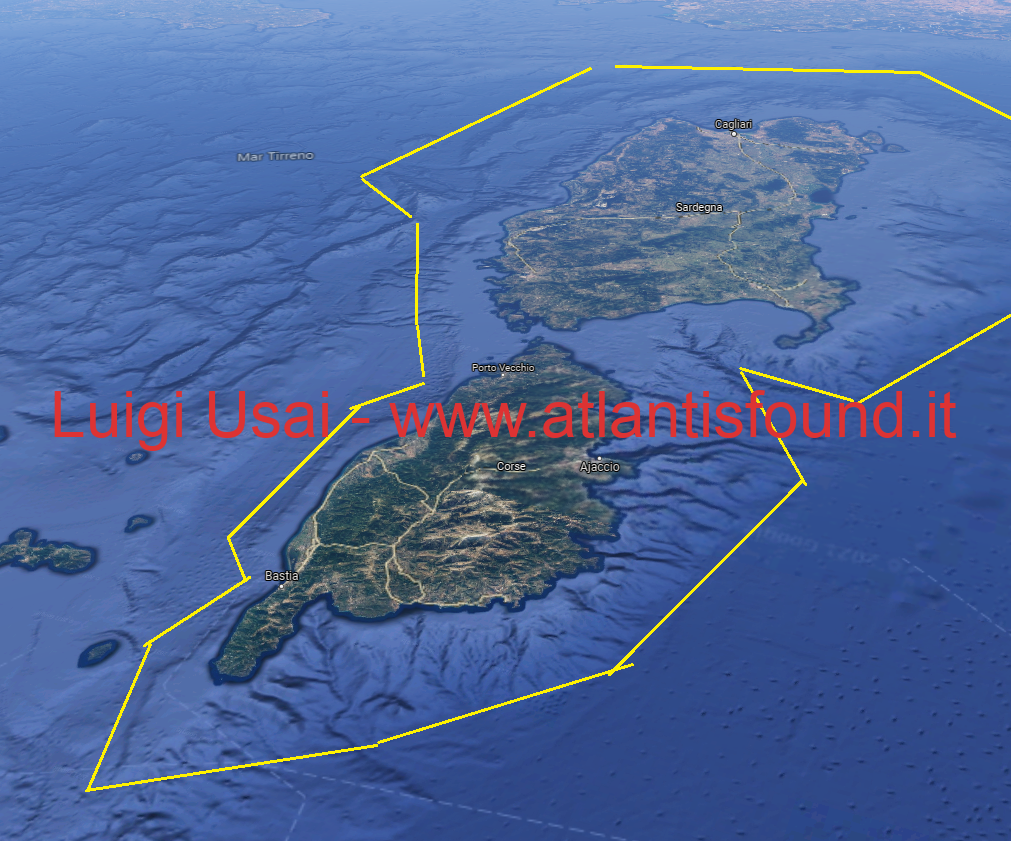
To learn more:
- the Atlantean name Gadiro, translated into Greek as Eumelo (reminiscent of Emilio);
- the relations between Karnak and Carnac;
- the Gadirica area and the exact location of the Columns: El Haouaria bank?
- are all the Gadiros therefore Sardinian-Corsican-Atlanteans?: starting from this hypothesis, find all the Gadiros mentioned in the official ancient history (one was Cretan; one was a poet; one won the Olympic Games competing with the foals brought to Patroclus’ funeral; find others);
- The presence of Sardinian toponyms that include the Sardinian divinities Corso Atlantis Isis and Horo (Oro): see the toponyms with Isidoro –> there is the possibility that the adoration of Isidoro was later Christianized in Sant’Isidoro. Note the presence of the same toponymy in Tenerife, a Sardinian-Corsican Atlantean colony.
- Further study to be done, on “mitza” Sardinian meaning -> means source, pool of water, as in the Platonic myth. It has a similar meaning in the Hebrew language, which is Semitic like Sardinian. I have the impression that the Jewish people in search of the promised land were nothing more than a portion of Sardinian peoples who migrated to Egypt in search of a land that would not sink, unlike the Sardinian block that was sinking. And this sinking, known only in remote times, every x thousand years, with the partial sinkings, is the same one that quoted Montezuma, stating that his ancestors came from the Atlantic Ocean (that is, the Mediterranean before 9600 BC), leaving a perfect land that was sinking though.
- The Cretans were Sardinian-Corsican Atlantean migrations –> Another reflection for archaeologists: why have I never heard any scholar make comparisons between the Minotaur and Su Boe Erchitu and Su Boe Muliache ? Why has no one ever pointed out that the minotaur is a Sardinian-Corsican mythological figure ? Look for the images of these characters online and you will understand that the minotaur is probably nothing more than an ancient Sardinian belief / legend, revived in Crete . The Minoans were Sardinian-Corsican-Atlantean migrations to Crete; as you know, Evans chose the word “Minoans” arbitrarily. There is also the androcephalic or bronze bull of Nule , which does nothing but confirm all these statements. Su Boe Erchitu is a legendary creature of Sardinian popular tradition . This is not to be confused with Su Boe Muliache, another Sardinian legendary creature .I’m not saying I’m really right. I’m saying: why don’t we try to explore other avenues of thought? Why don’t we look for other kinds of solutions to unsolved problems? I hope these sentences of mine are understood for what they are: it is obvious that I am not a specialist; my proposal to scholars is to be open to examining possibilities that until now had been excluded a priori. Again, I invite you to re-examine the toponymy of Sulcis, because all those names of towns that refer to the Platonic myth are too strange: in Carbonia there is a hamlet called “Acqua Callentis”; in Nuxis “S’acqua callenti de Basciu”, S’Acqua callenti de Susu; the medieval town of Acquafredda disappeared, which left the castle of Acquafredda; the source of Zinnigas; and there are even links to Egyptian toponymy: Heliopolis (city of the sun) and in Sulcis Terr’e Soli (land of the sun, Terresoli). Sais in Egypt and Is Sais Inferiore and Is Sais Superiore in Sulcis. In short, in my opinion this toponymy should be seriously taken into consideration by a self-respecting scholar. I can also understand that perhaps no one has noticed until now, but now that I have made the information public, in my opinion it may be worthwhile for some scholars to start treading these new unexplored paths.
- The last few days I realized that Cabras is a surname, it is the name of a town; it is the locality where they found the Giants of Mont’e Prama; and I thought: “Cabras in Sardinian means goats”; this name can even date back to the Paleolithic! Immediately afterwards I thought: “I wonder if there was an ancient village called Brebeis”, which means “sheep” in Sardinian. I thought these things about 2 days ago. Just now, examining the Sulcis, I realized that there is the Is Brebeis pond, Stagno Le Pecore, right in the Sulcis . Crazy: it seems that my theories have a match in the real world, everything now seems to have a deep and even intuitive meaning. I had never heard of this Is Brebeis pond before…
If the Sardinian Corsican Atlantis theory were true and scientifically proven , there would be many immediate consequences from a scientific, historical, anthropological, cultural, linguistic, commercial and philosophical point of view. Here are some examples:
- Scientific : The discovery of such an advanced civilization on such a remote island could stimulate new scientific research to better understand this civilization and its impact on the ancient world. New excavation and study campaigns may be required to explore the submerged ruins and ancient artifacts.
- Historical : The discovery of such an advanced civilization on such a remote island could change the way we view ancient history. More research may be needed to better understand how this civilization developed and how it interacted with other Mediterranean cultures.
- Anthropological : The discovery of such an advanced civilization on such a remote island could provide new information on the cultural exchanges between the different civilizations of the ancient Mediterranean. More research may be needed to better understand how these cultures interacted with each other and how they influenced each other’s traditions and customs.
- Cultural : The legend of Atlantis has fascinated people for centuries and the discovery of its true location could inspire new works of art and literature. New stories, poems, paintings and sculptures representing this lost civilization could be created.
- Linguistic : The discovery of such an advanced civilization on such a remote island could provide new information on the diffusion of languages in the ancient Mediterranean. More research may be needed to better understand how these languages spread among different Mediterranean cultures.
- Trade : The discovery of such an advanced civilization on such a remote island could suggest the existence of unknown trade routes between the different cultures of the Mediterranean. More research may be needed to better understand how these routes worked and how they influenced the diffusion of ideas and innovations.
- Philosophical : The legend of Atlantis has been passed down from the ancient Greeks and the discovery of its true location could provide new perspectives on ancient Greek philosophy. More research may be needed to better understand how the ancient Greeks incorporated the legend of Atlantis into their philosophical musings.
In general, if the Sardinian Corsican Atlantis theory were true and scientifically proven, it would have many immediate consequences from a scientific, historical, anthropological, cultural, linguistic, commercial and philosophical point of view.
Colonie Sardo Corso Atlantidee before the submersion of the Sardinian-Corsican geological block
Among the best known Sardinian Corsican Atlantean colonies before the submersion of the Sardinian Corsican Atlantean geological block, there are the structures found in Turkey of Gobekli Tepe, Karan Tepe and other similar ones still being analyzed today. Reconstructing this information is extremely difficult, but we could try to do it, starting for example from the symbols. The structure with concentric circles should by now be known as a reference to the structure of Sulcis, where the ancient Sardinian-Corsican ruler Poseidon set up residence together with Clito, on a hill/hill near Santadi and Sant’Anna Arresi. Gobekli Tepe and Karan Tepe present Atlantean structures called Taulas (tables), in the shape of a T, which the Atlanteans had also built on the island of Menorca. The Sardinian Corsican Atlantean Mesolithic symbolism is present in Turkey in the various Tepes excavated so far, as they include the Bull sacred to the Atlanteans, and the vulture. The Atlantean vulture, represented in Turkey, will then be represented among the people of Egypt with the sacred representation of Mut and Nekhbet. In particular, the Egyptians, to clarify that they were speaking of the Sardinian-Corsican Atlanteans, put the symbol of the Metallurgy of Sulcis in the claws of Nekhbet, which we show in the image immediately below:
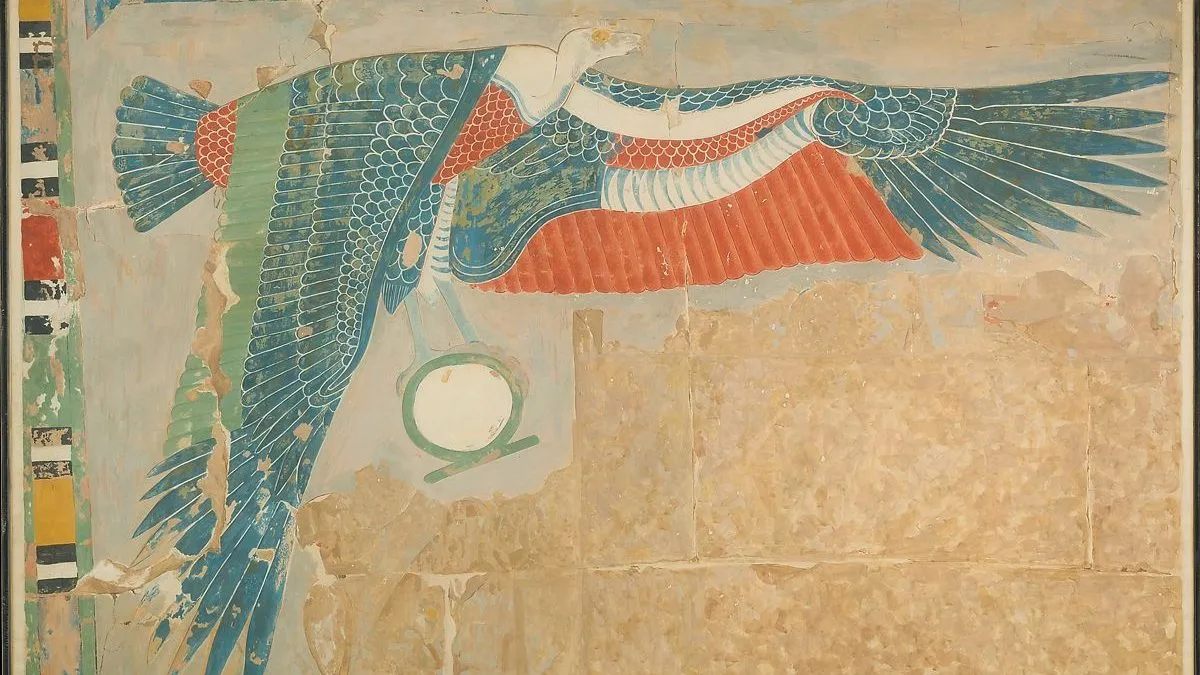
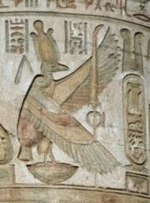
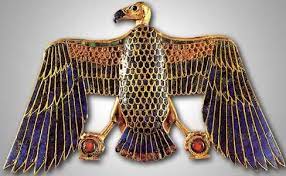
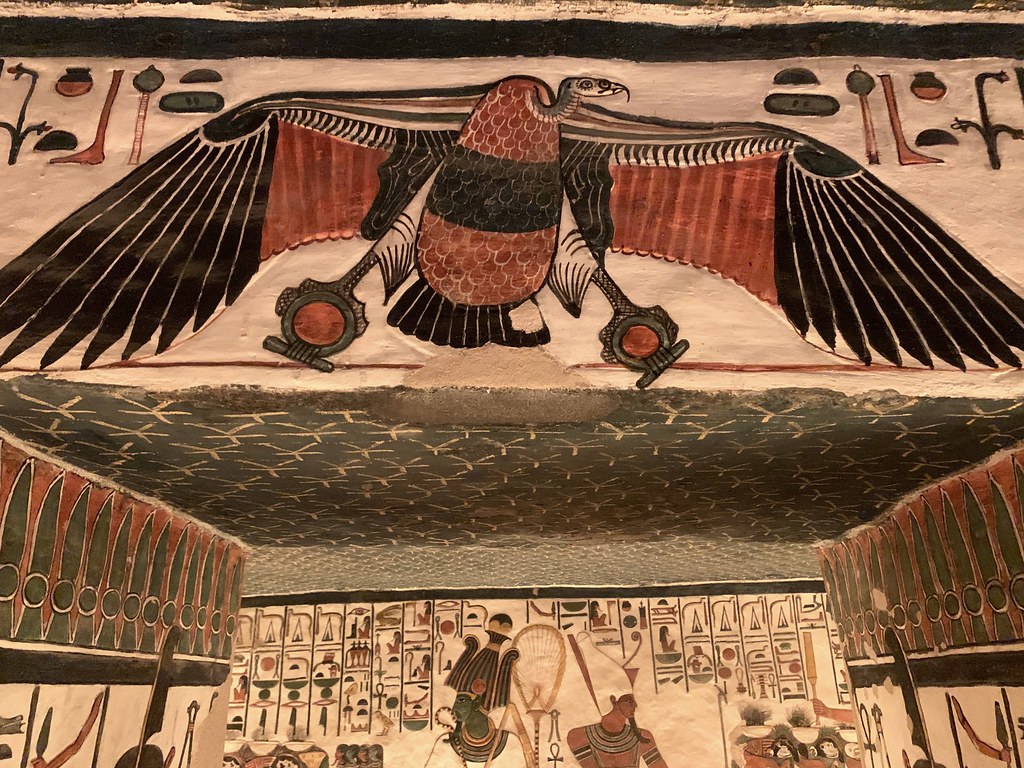
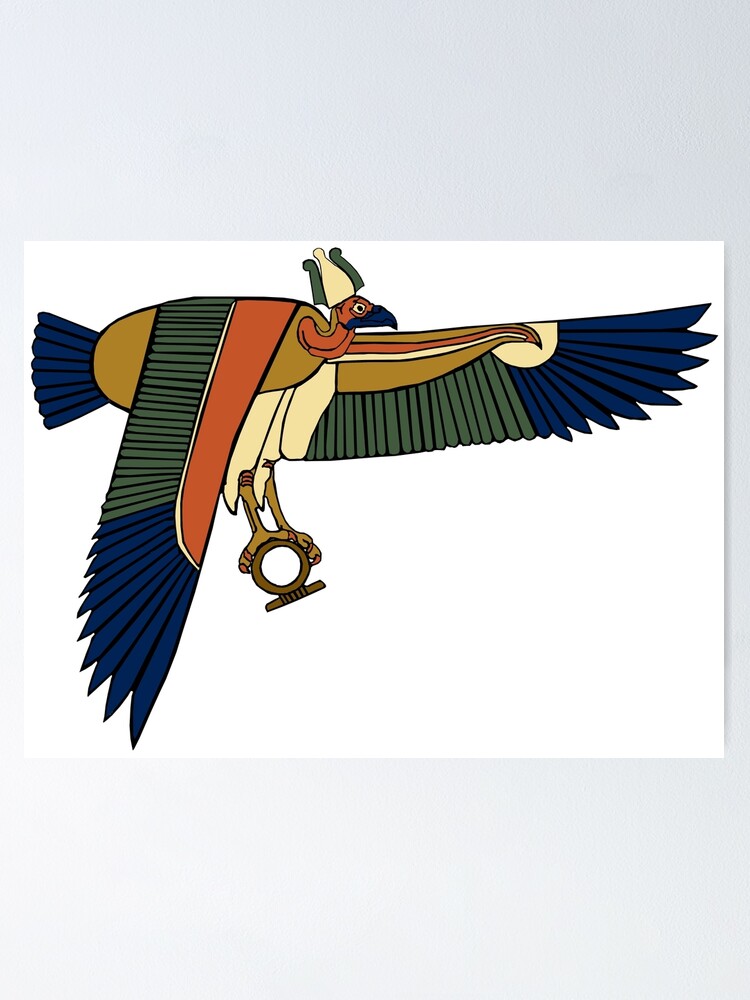
The Sardinian Corsican Atlanteans built the Gobekli Tepe and Karan Tepe structures as a demonstration of their technological advancement and architectural skills, and this had great cultural significance for them. Their behavior could not go unnoticed, and showed other populations new ways of living, new behaviors, new religions. There was an ongoing cultural exchange between different civilizations and populations. This also explains why the Taulas of Menorca are also present in Gobekli Tepe. To clarify all these oddities, a paradigm shift was needed, which we will call the Sardinian Corso Atlantide Paradigm, which manages to clarify many hitherto obscure aspects of the archaeological and anthropological past.
CRITICISM OF ATLANTIS SARDO CORSA
SAFEGUARDING DISCOVERY AND PROTECTING CULTURAL HERITAGE
I would like to point out that I have done everything to make this data public and disclose it, but I have hit a brick wallboth from the Superintendencies, who never replied to my emails or my pecs, and from the Ministry of Cultural Heritage, which never replied to my emails or my pecs, and from various university professors and archaeologists whom I contacted privately. I was told that “The scientific community proper does not exist”, or that “they do not disclose the discoveries of other scholars”. In practice, if an ordinary citizen makes a potential discovery, he is not provided with any support to communicate it to the scientific world. There is the expectation that an inexperienced person, who has never done it before, creates a perfect scientific paper from scratch, with all the trappings, and delivers it to I don’t know who for publication and analysis by the scientific community. In my opinion this is a shameful thing. I would have expected help in first trying to arrange my claims in an understandable way, and then in disseminating for analysis and cross-checking the veracity of the claims. Same attitude from the publishing houses: they would have published the book, but only after the scientists had confirmed my statements.



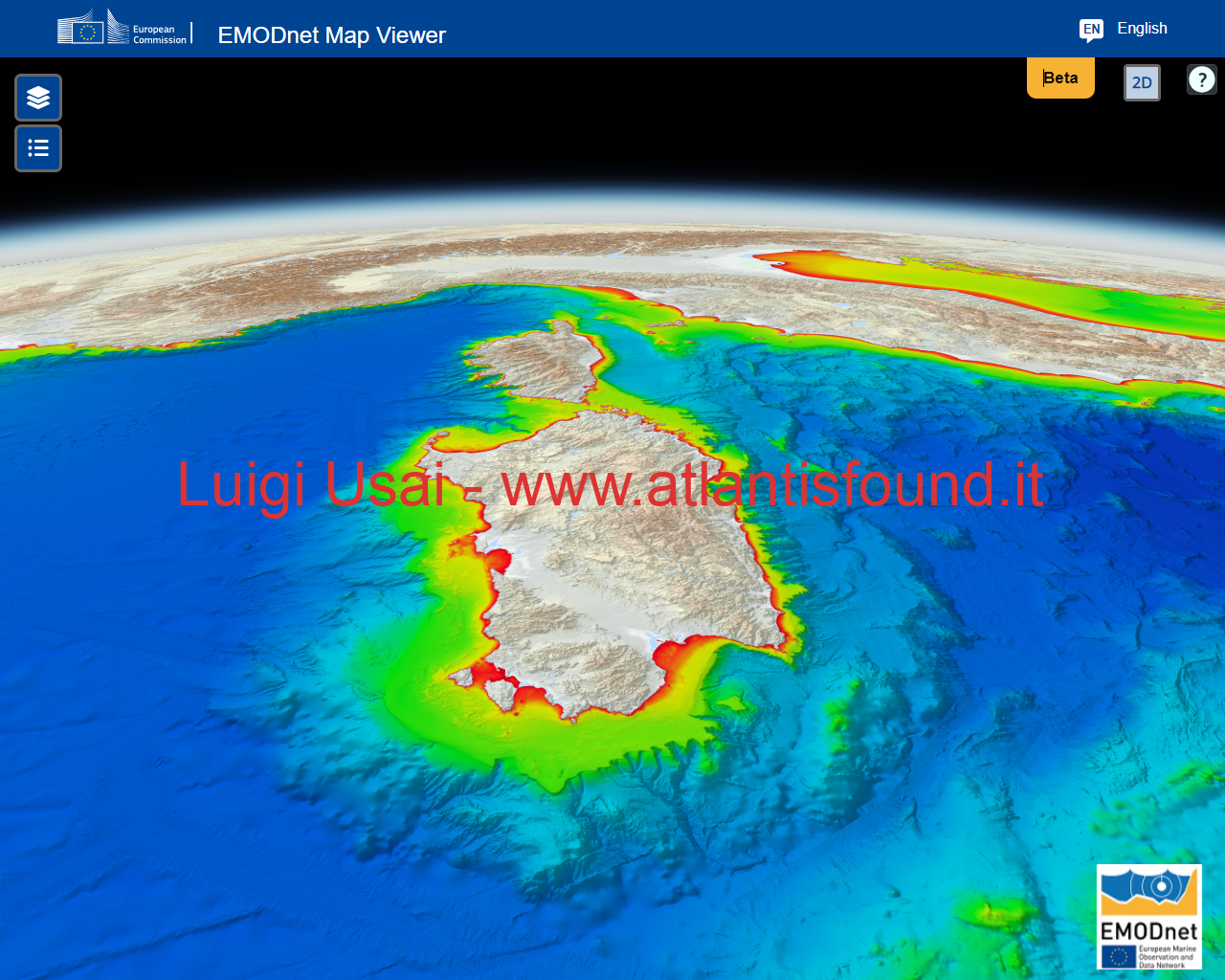
Luigi Usai’s theory on the position of Atlantis in the semi-submerged Sardinian-Corso block has not yet been counter-validated by scholars, but it has aroused great interest among scholars from all over the world for its suggestion on the possible discovery of Atlantis. Usai has provided hundreds of verifiable and scientific proofs that seem to consistently show the existence of Atlantis in the currently semi-submerged Sardinian Corsican geological block. However, some scholars have raised objections and criticisms of Usai’s theory, arguing that there is no concrete evidence demonstrating the existence of Atlantis in the semi-submerged Sardo-Corso block. Furthermore, some have pointed out that Usai’s theory is based on subjective interpretations of historical and geological sources and that no stratigraphy has yet been carried out for its cross-verification. Other scholars have instead expressed interest in Usai’s theory and have underlined the need for further research and analysis to verify its validity. The possible implications of Usai’s theory of Atlantis’ location for human history are enormous, as they could lead to a rewriting of ancient history and the discovery of new information about ancient civilizations. However, it is important to emphasize that Usai’s theory has not yet been confirmed and that further research and analysis are needed to verify its validity. Other scholars have instead expressed interest in Usai’s theory and have underlined the need for further research and analysis to verify its validity. The possible implications of Usai’s theory of Atlantis’ location for human history are enormous, as they could lead to a rewriting of ancient history and the discovery of new information about ancient civilizations. However, it is important to emphasize that Usai’s theory has not yet been confirmed and that further research and analysis are needed to verify its validity. Other scholars have instead expressed interest in Usai’s theory and have underlined the need for further research and analysis to verify its validity. The possible implications of Usai’s theory of Atlantis’ location for human history are enormous, as they could lead to a rewriting of ancient history and the discovery of new information about ancient civilizations. However, it is important to emphasize that Usai’s theory has not yet been confirmed and that further research and analysis are needed to verify its validity. as they could lead to a rewriting of ancient history and the discovery of new information about ancient civilizations. However, it is important to emphasize that Usai’s theory has not yet been confirmed and that further research and analysis are needed to verify its validity. as they could lead to a rewriting of ancient history and the discovery of new information about ancient civilizations. However, it is important to emphasize that Usai’s theory has not yet been confirmed and that further research and analysis are needed to verify its validity.
Oceanine, water nymphs, mountain nymphs, are the names by which Sardinian-Corse women were called.
New working hypothesis: the ancient Greeks called Sardinian women “water nymphs”, “mountain nymphs” . Now you can go and study all the references you find online to the “water nymphs”, and little by little you will begin to understand that they are the women who lived in what is now Sardinia.
Why Oceanines? Because the sea around the Sardinian-Corsican block was called the Atlantic Ocean in the Paleolithic, so from the Paleolithic onwards, if you were talking about a woman who lived in that territory, for example the current Sardinia and Corsica, you could say that she was an Oceanina, that is, that it came from the Atlantic Ocean, as in the image:

Keepers of the water springs –> the sacred wells of the Nuragic era rejoice in the caverns, rejoice in the caves –> the caves: for example Grotte Is Zuddas, Grotta d’Acquafredda; Grotto of Su Carroppu of Sirri in Carbonia, Grotto of Neptune in Alghero etc; you rejoice in the caves -> the Domus De Janas rural girls -> well, at least they didn’t say “you behave like shepherds”, it’s already a good start girls of the springs and that you live in the woods -> Sardinia was all a wood, then transformed into the Granary of Rome; scented virgins –> well, at least they didn’t say “pottaisi unu fragu purexiu”, that’s a good start; dressed in white —> I missed this one: I didn’t know that Sardinians wore white perfume the breezes, protect the goats and the shepherds –> here is a clear reference to the agricultural world in general, but it is even in tune with contemporary Sardinia; dear to the woods, with splendid fruits -> now re-reading all the references to the Sea Nymphs, it is very clear to understand that we are talking about Sardinian Women. When in mythology it says: “X” married a sea nymph, it simply means that he married a Sardinian woman, that’s all. Search as many texts as you like to cross-check, and you will soon begin to understand that little by little progress is being made in understanding antiquity. If we really want to make significant progress in understanding meanings, we must also strive to do something that no one has ever done before: DARE. Trying to speculate, theorize things that archaeologists cannot afford to say because they would ruin their reputation, to try to SEE, UNDERSTAND what no one has been able to see so far. Now we can try to restudive the Naiads and the Nereids, starting from these reflections, to see if it is possible to extract new significant information, new points of view useful for learning. I have not found specific information on other websites suggesting that the water nymphs were simply Sardinian women, at the moment it seems to be just my belief. However, the female figure in Sardinian history and culture is absolutely central and Sardinian traditions with their legends, religious cults, political and popular vicissitudes are closely linked to matriarchal roots
The Superintendencies and at least one Ministry of the Italian Government have never replied to my pecs (certified e-mail with equivalent value to Registered Mail with Return Receipt) where I reported the discovery within 24 hours as per current legislation on the procurement of Archaeological or Cultural Heritage. Maybe they thought it was a joke .
Therefore:
1) I distrust them publicly ;
2) based on current legislation, I have a legal and moral duty to protect and safeguard the findings made : I made the news public to prevent the discovery and the findings from being ruined in recent years (damaged, sabotaged, stolen, illegally exported, destroyed by incompetent people such as inexperienced construction personnel carrying out field maneuvers etc.) due to State mismanagement of finds. In fact, by law I would have the obligation of silence, to be entitled to the economic percentage on the discovery. But in this case, my conscience requires me to make the news public because in my opinion it isState officials who are supposed to protect the discovery and the findings (cultural assets, treasures, works of art, artifacts, ports, villages, boats, etc.), are currently endangering it with their apparent indifference.
Some Data/Information used in this website was made available by the EMODnet Human Activities project and Emodnet, www.emodnet-humanactivities.eu, funded by the European Commission Directorate General for Maritime Affairs and Fisheries.
On the basis of current legislation, considering the animus derelinquendi towards the corpus derelictionis, I declare the find and/or the objects present therein Res Nullius and Res Derelicta, except for different regulatory provisions which will be evaluated from time to time with the competent Authorities.
